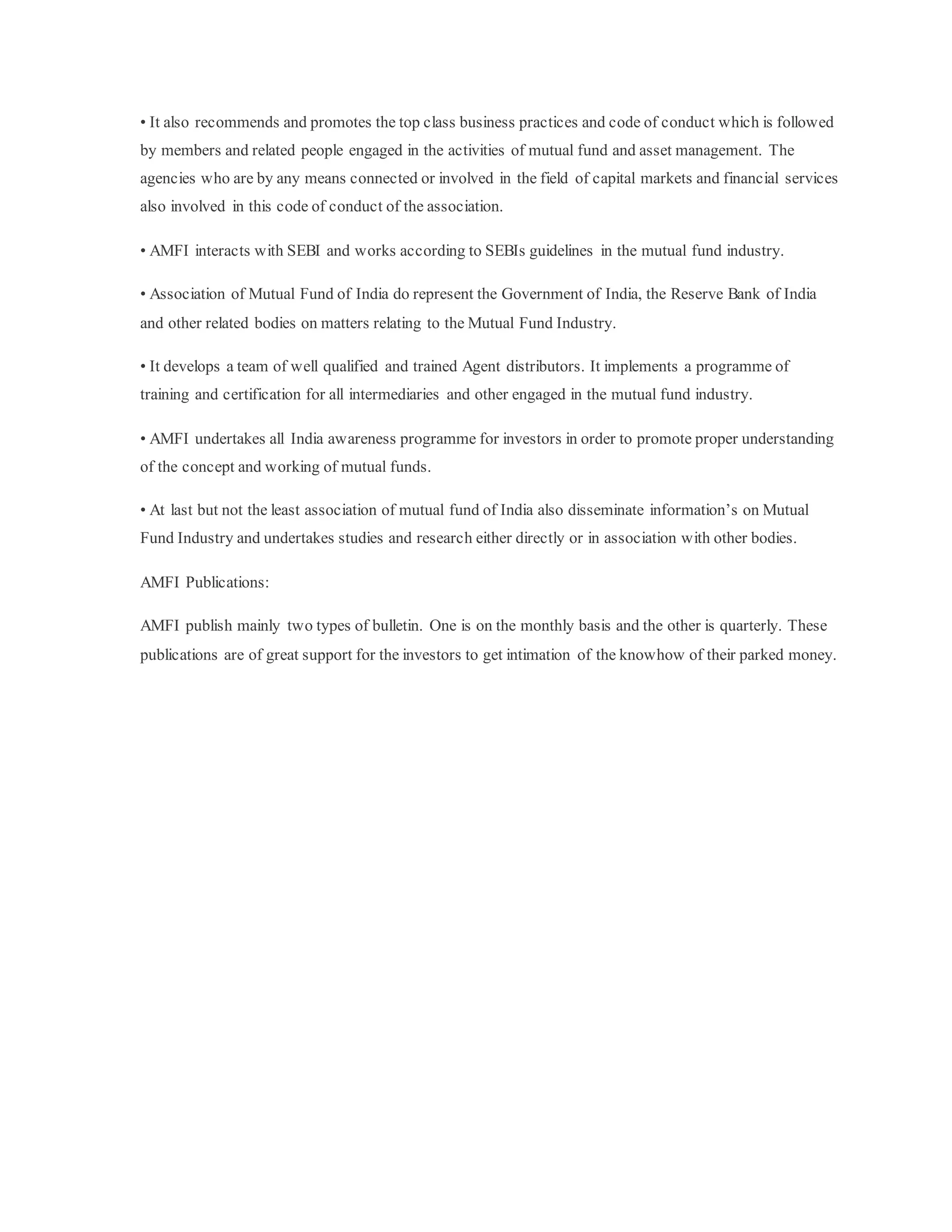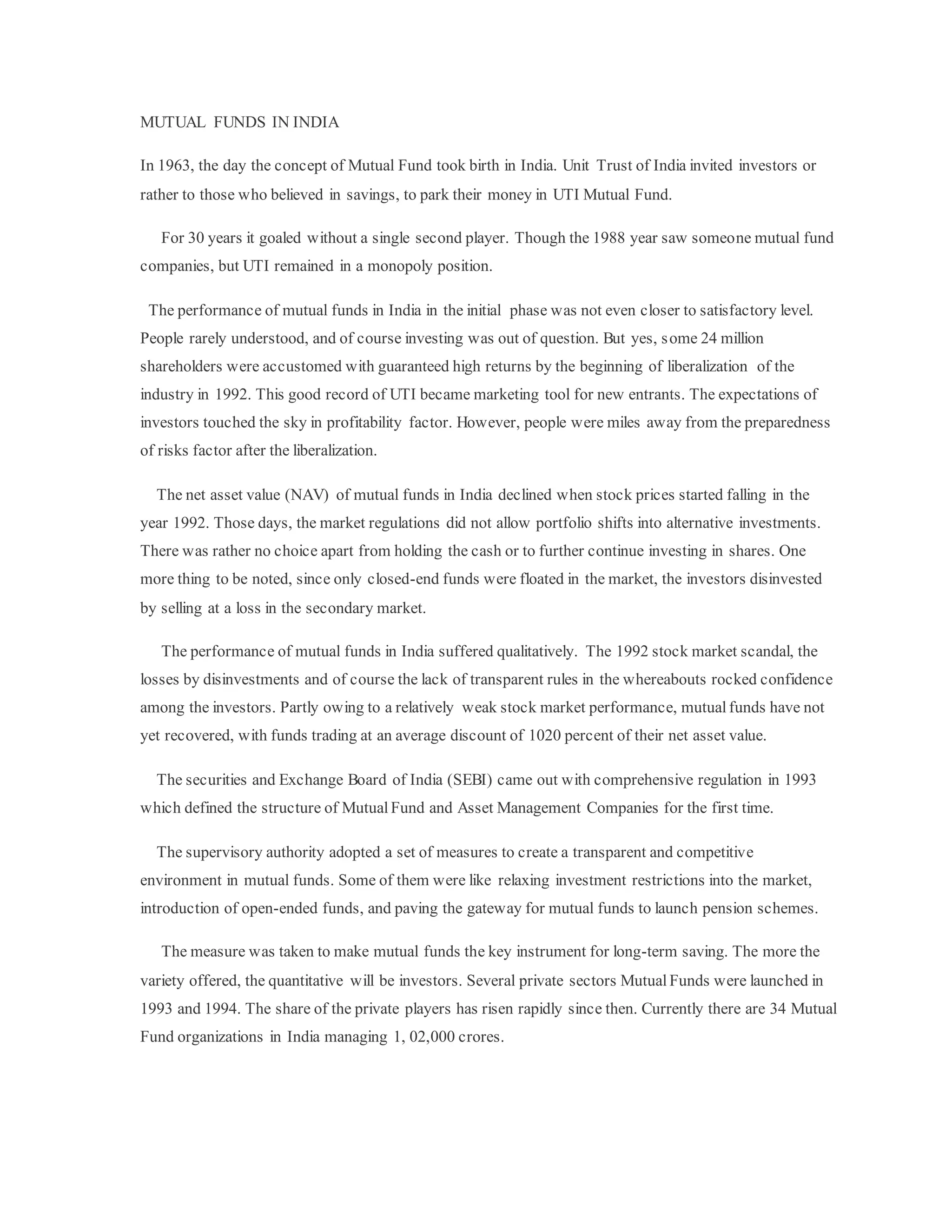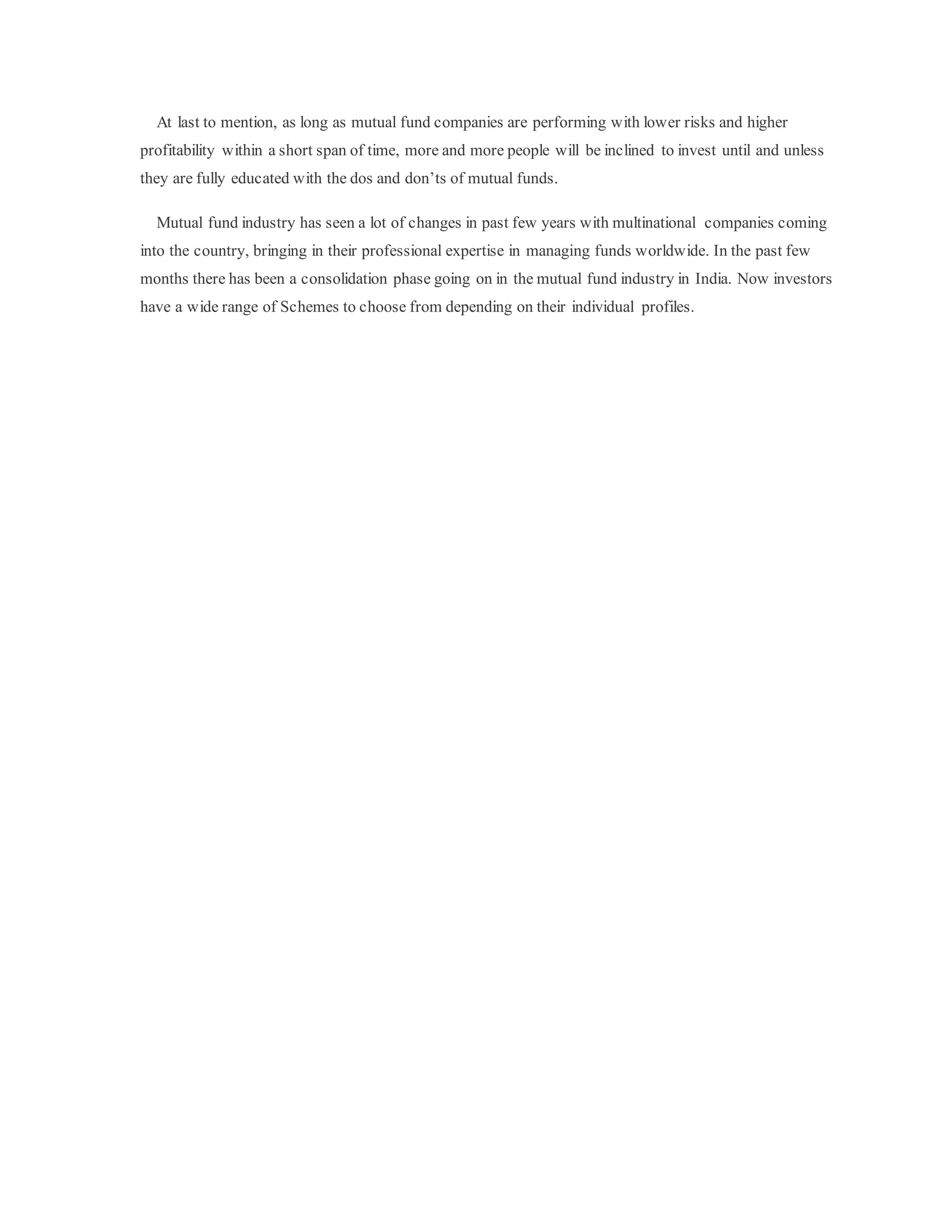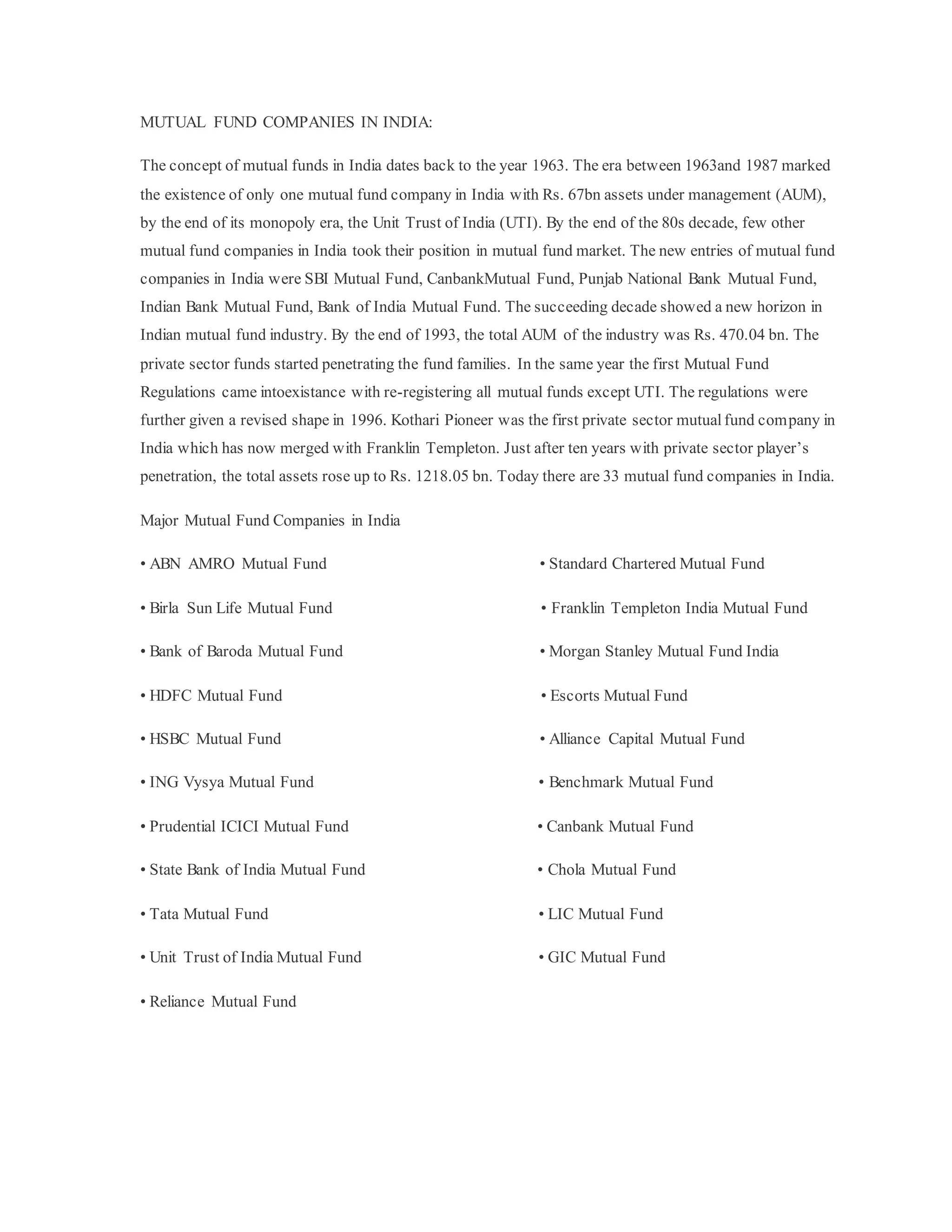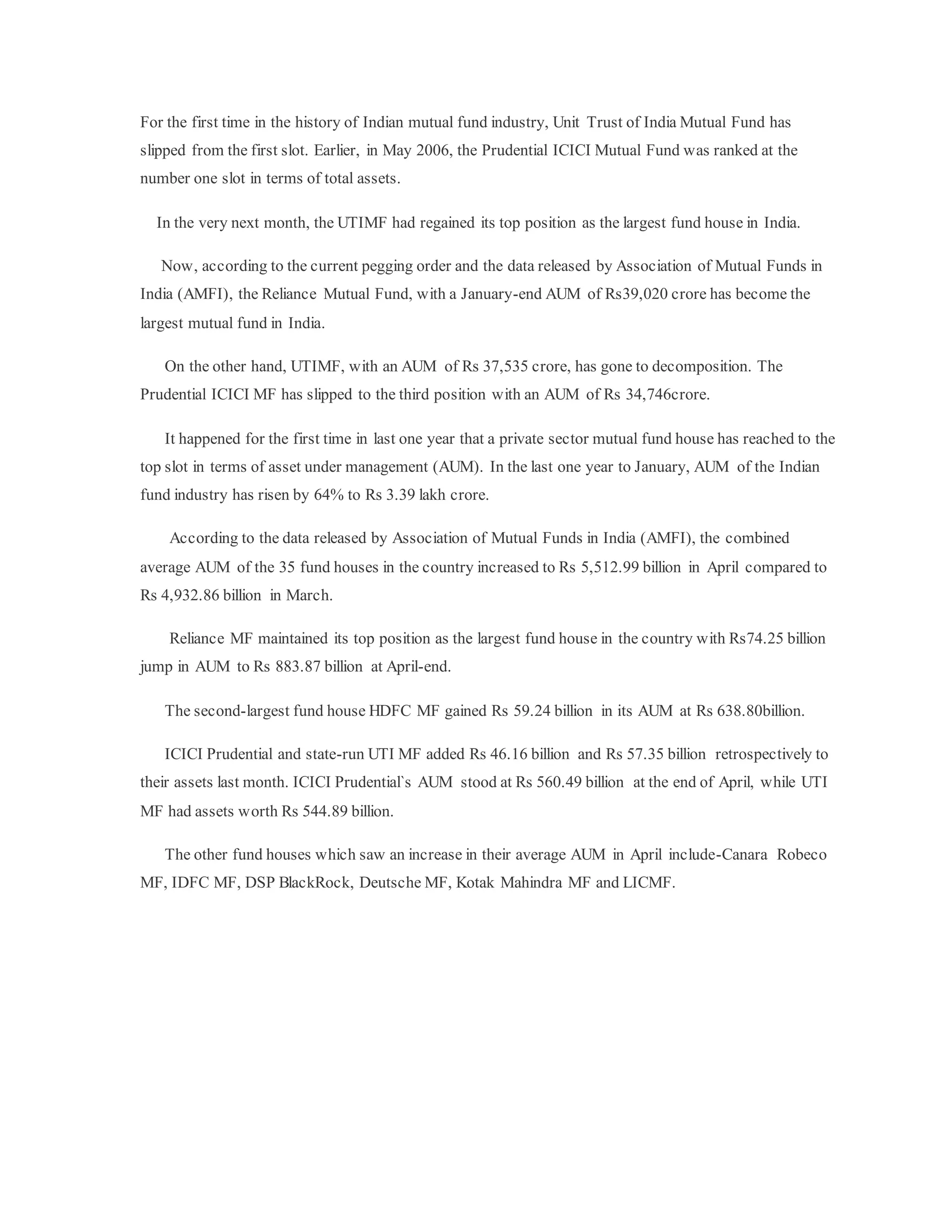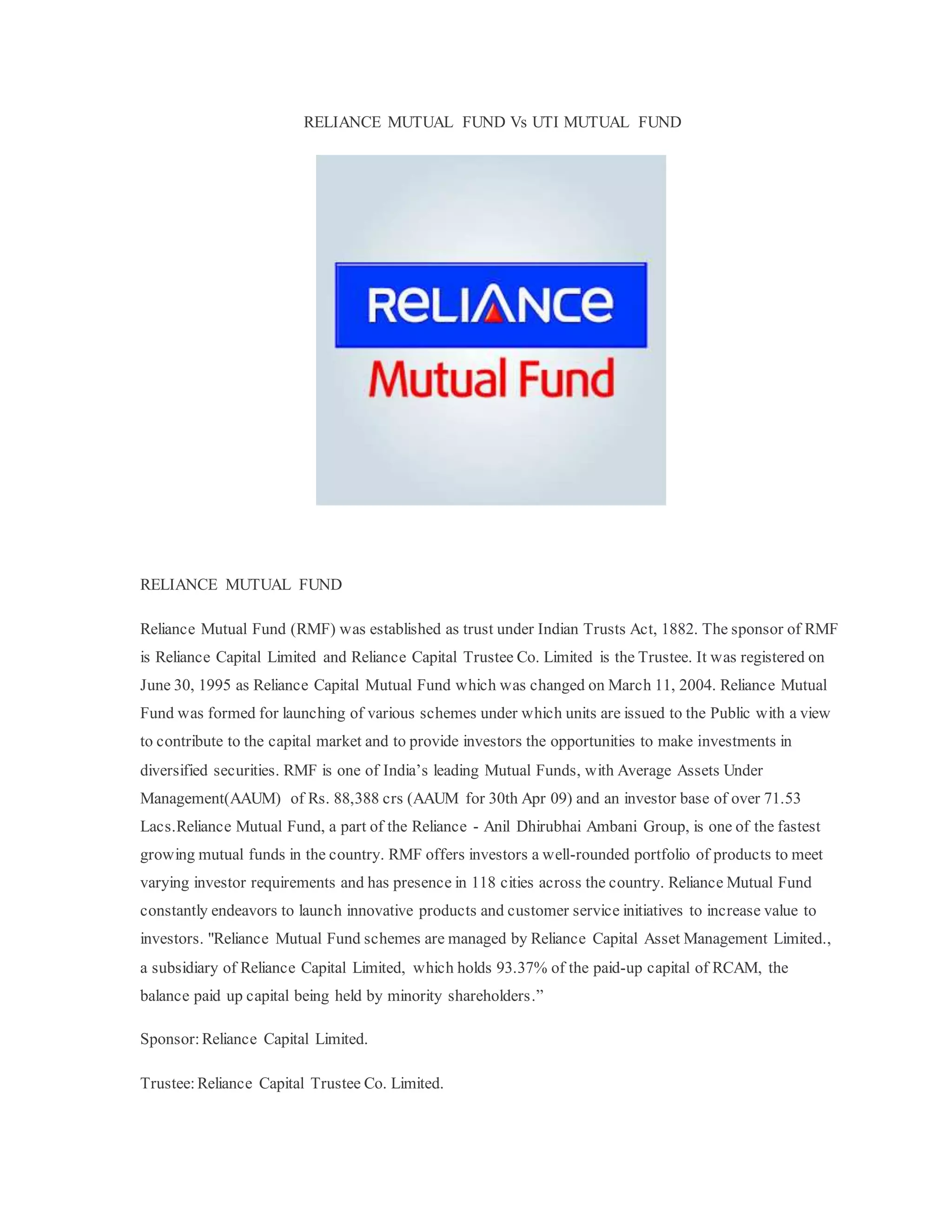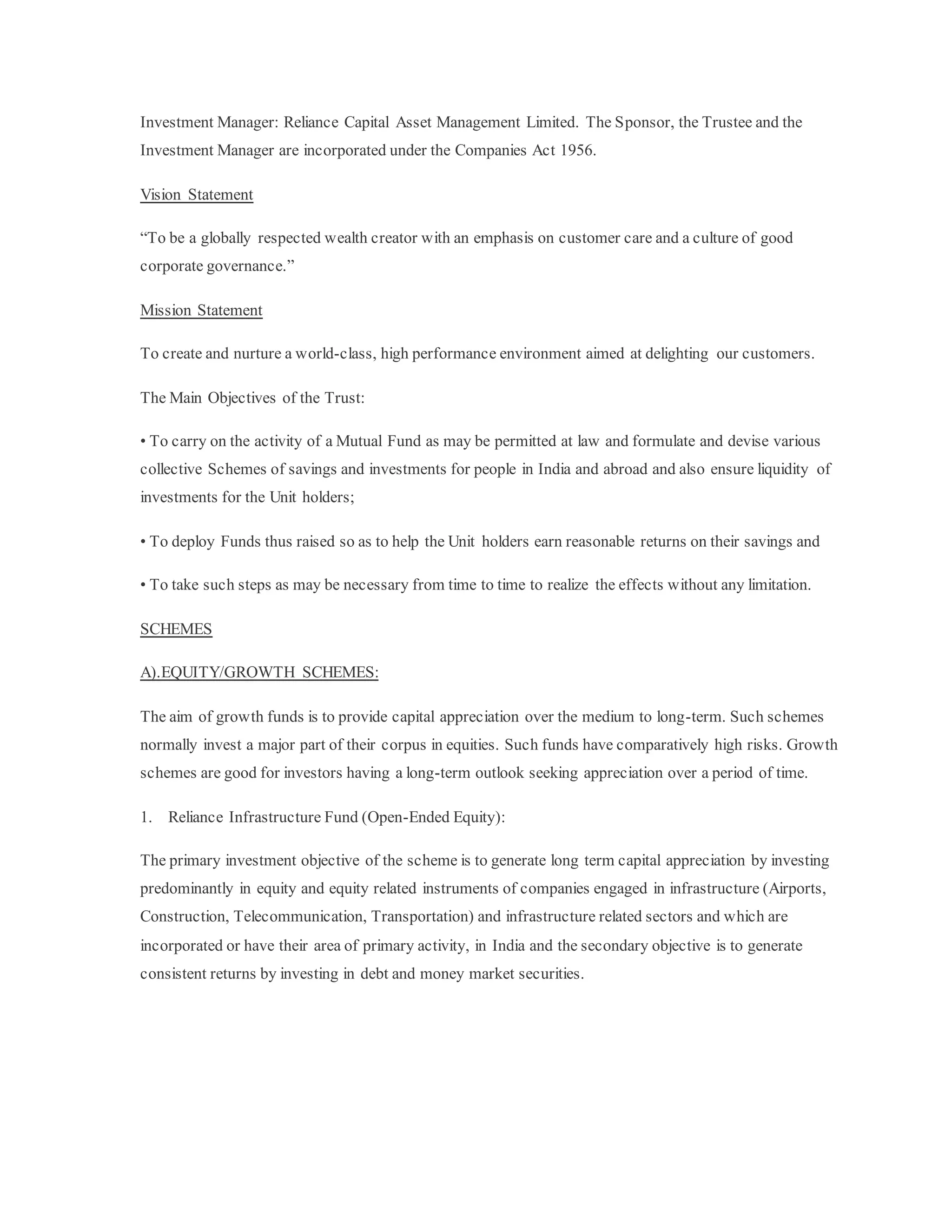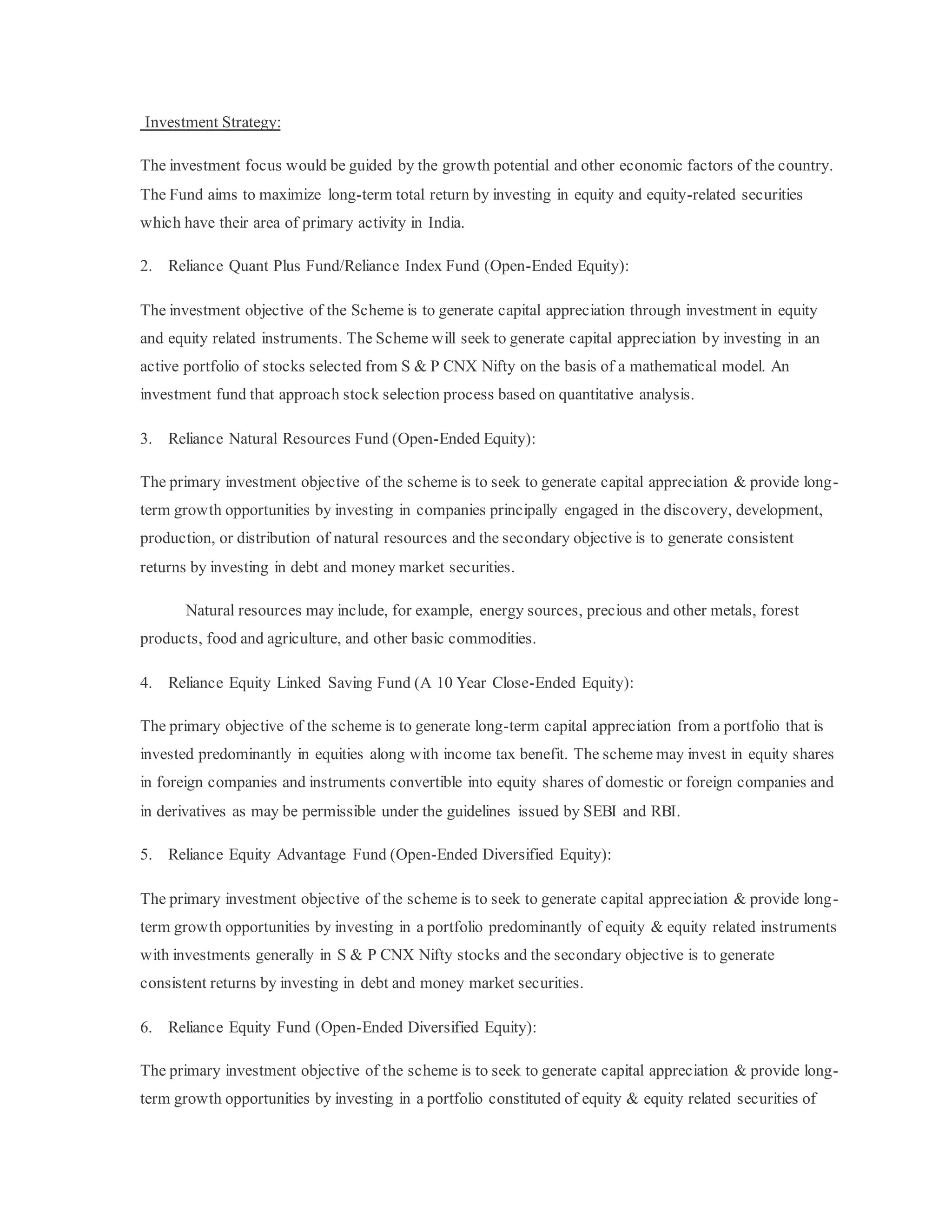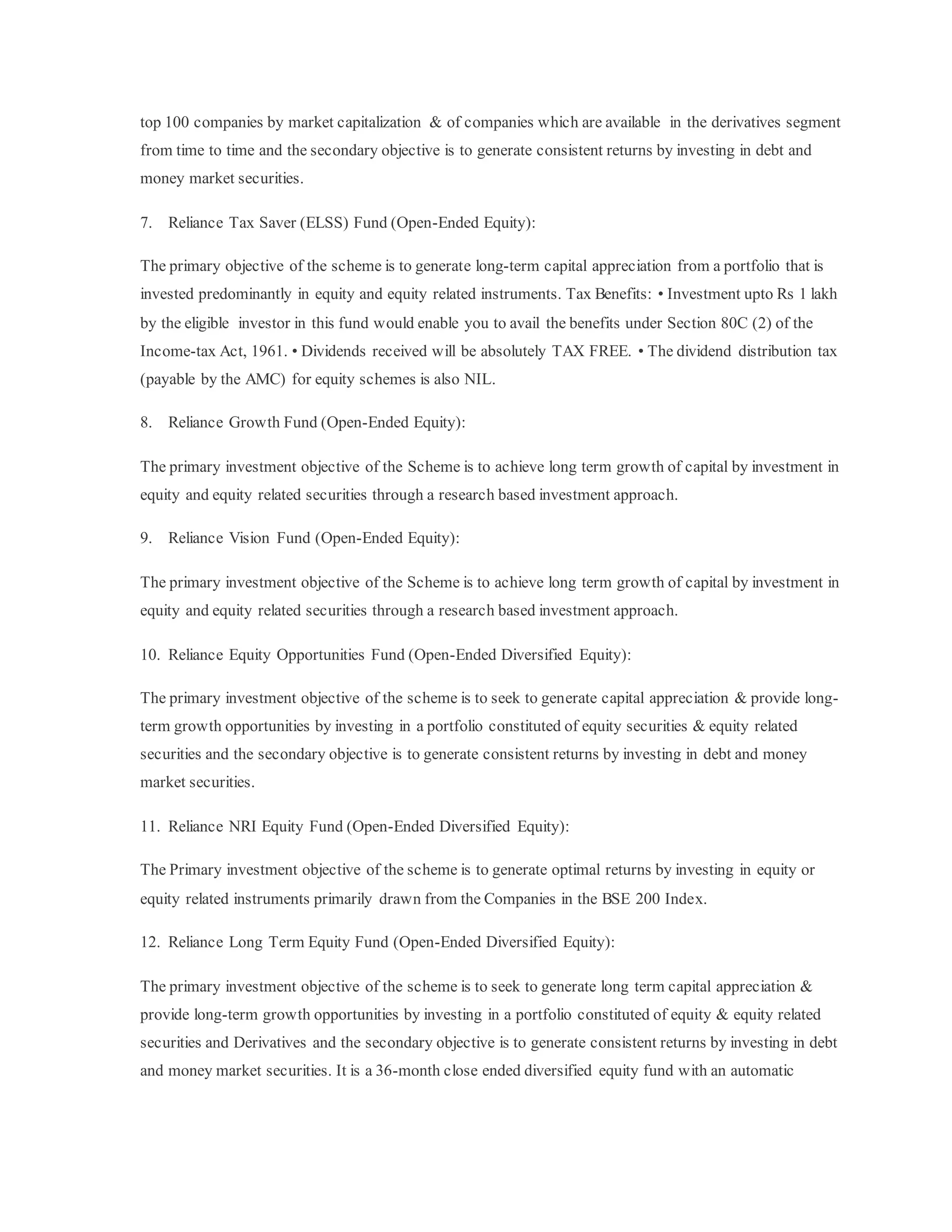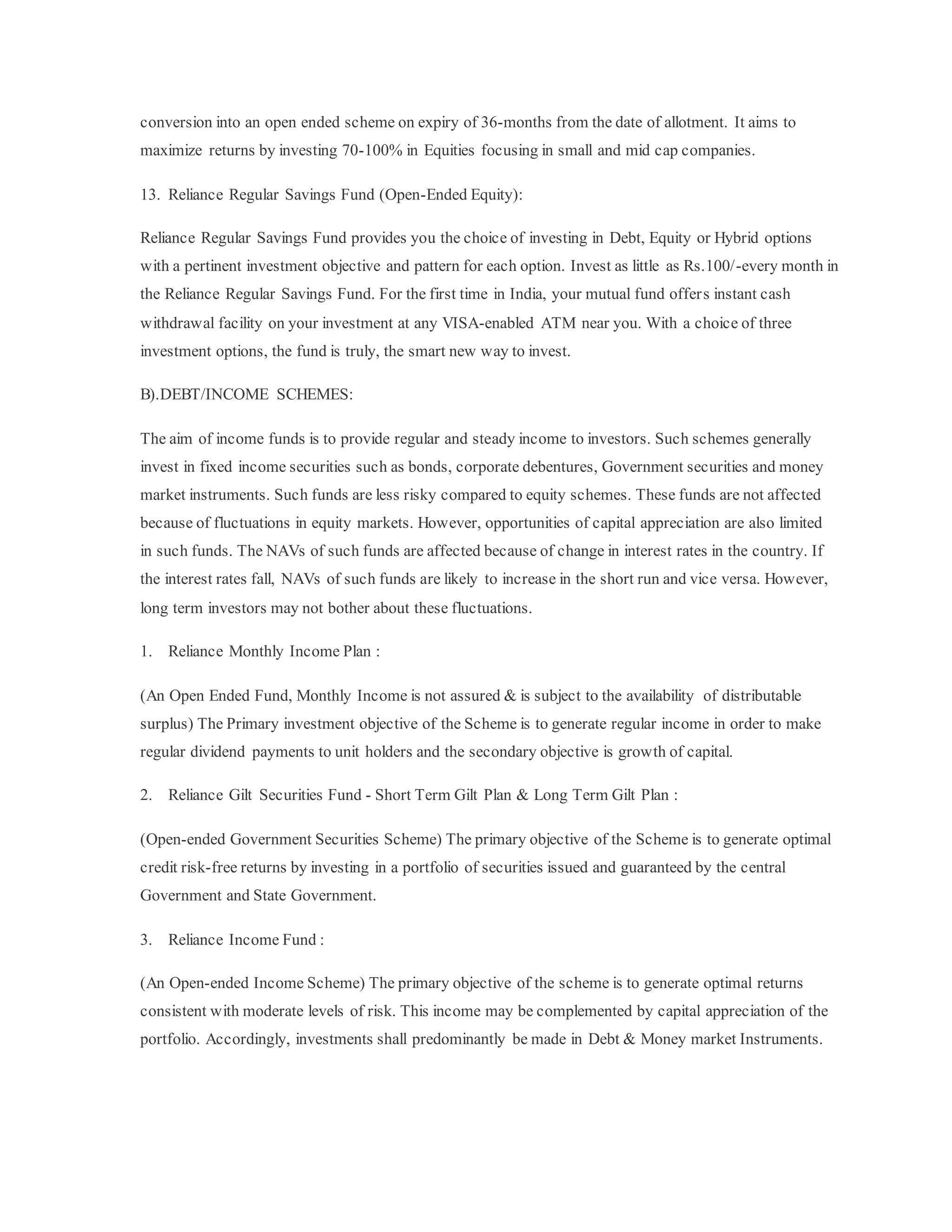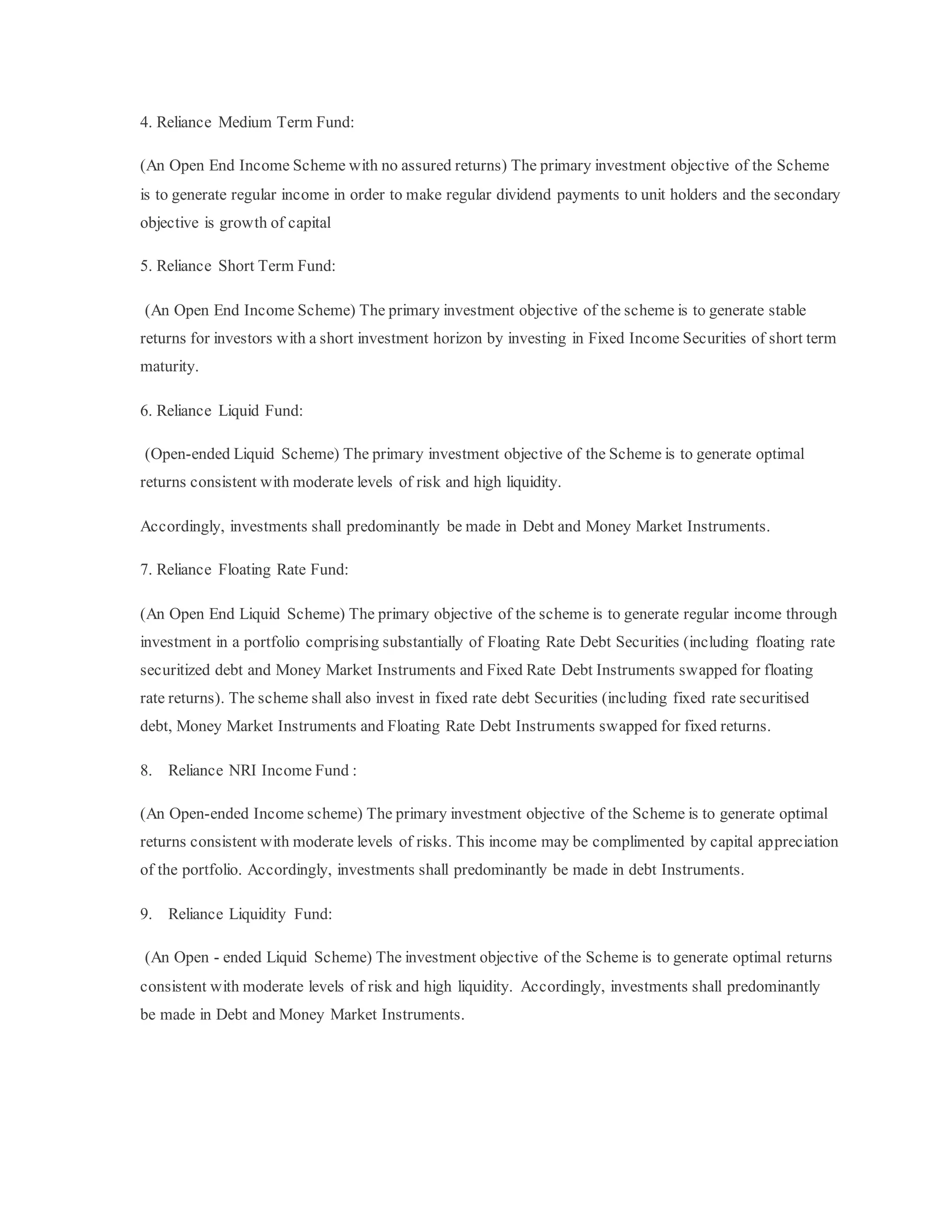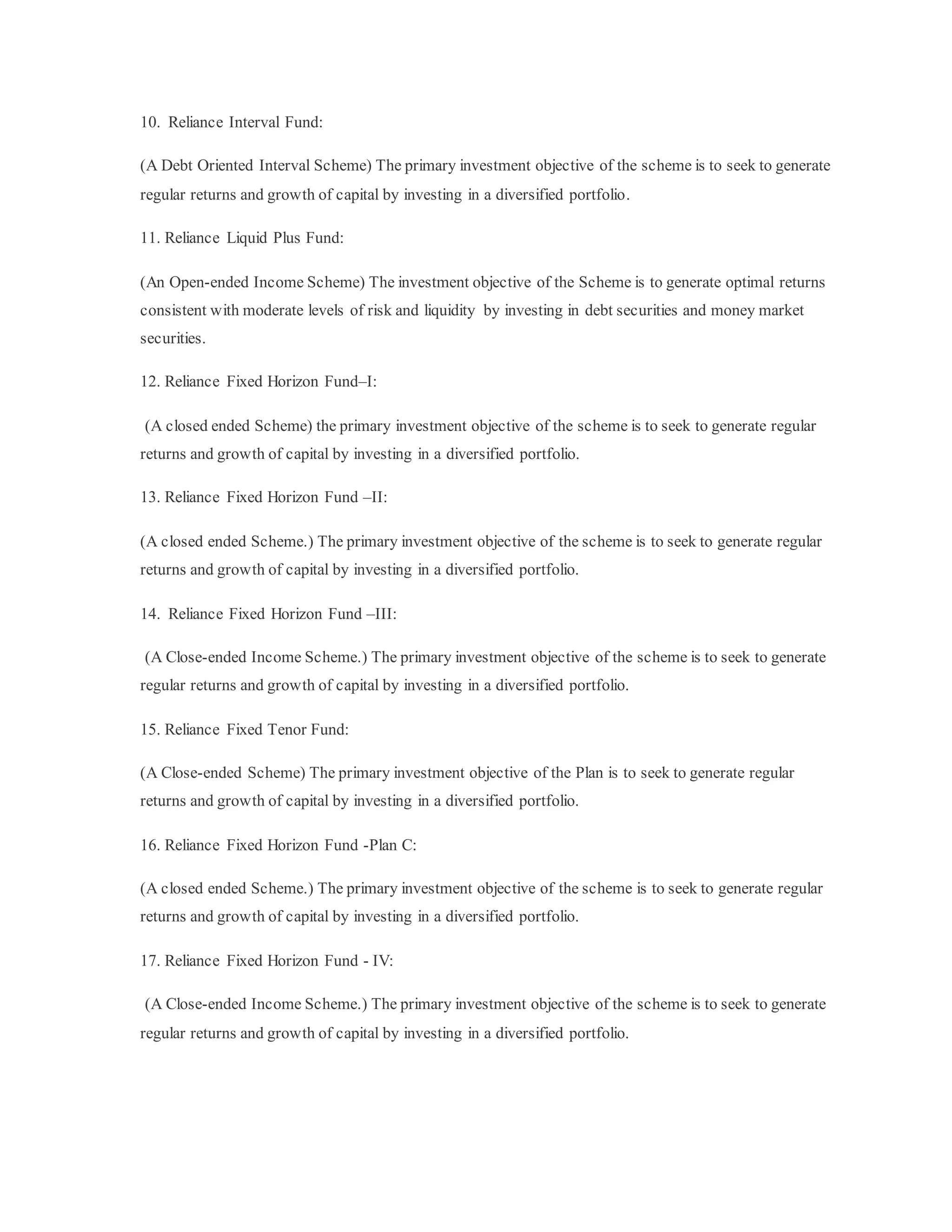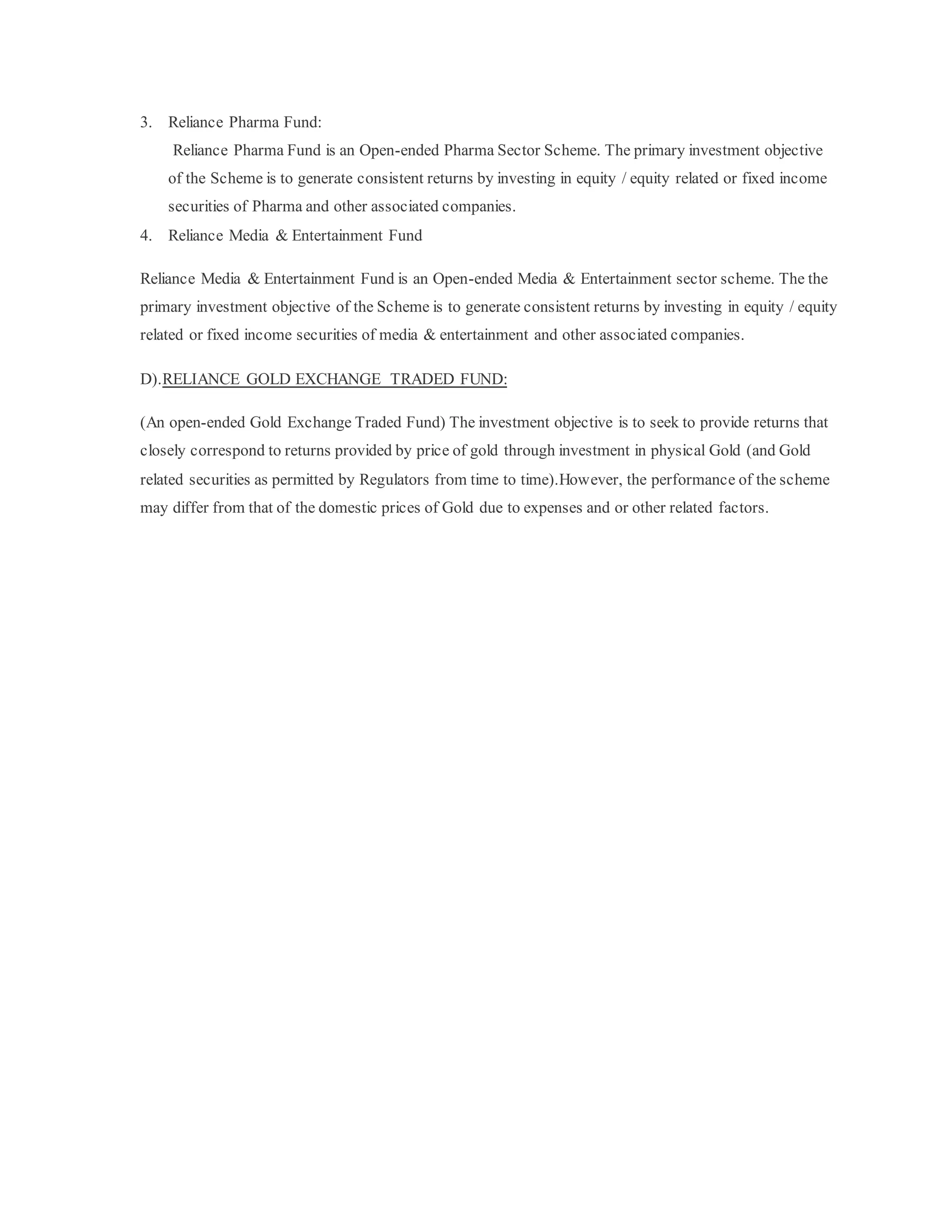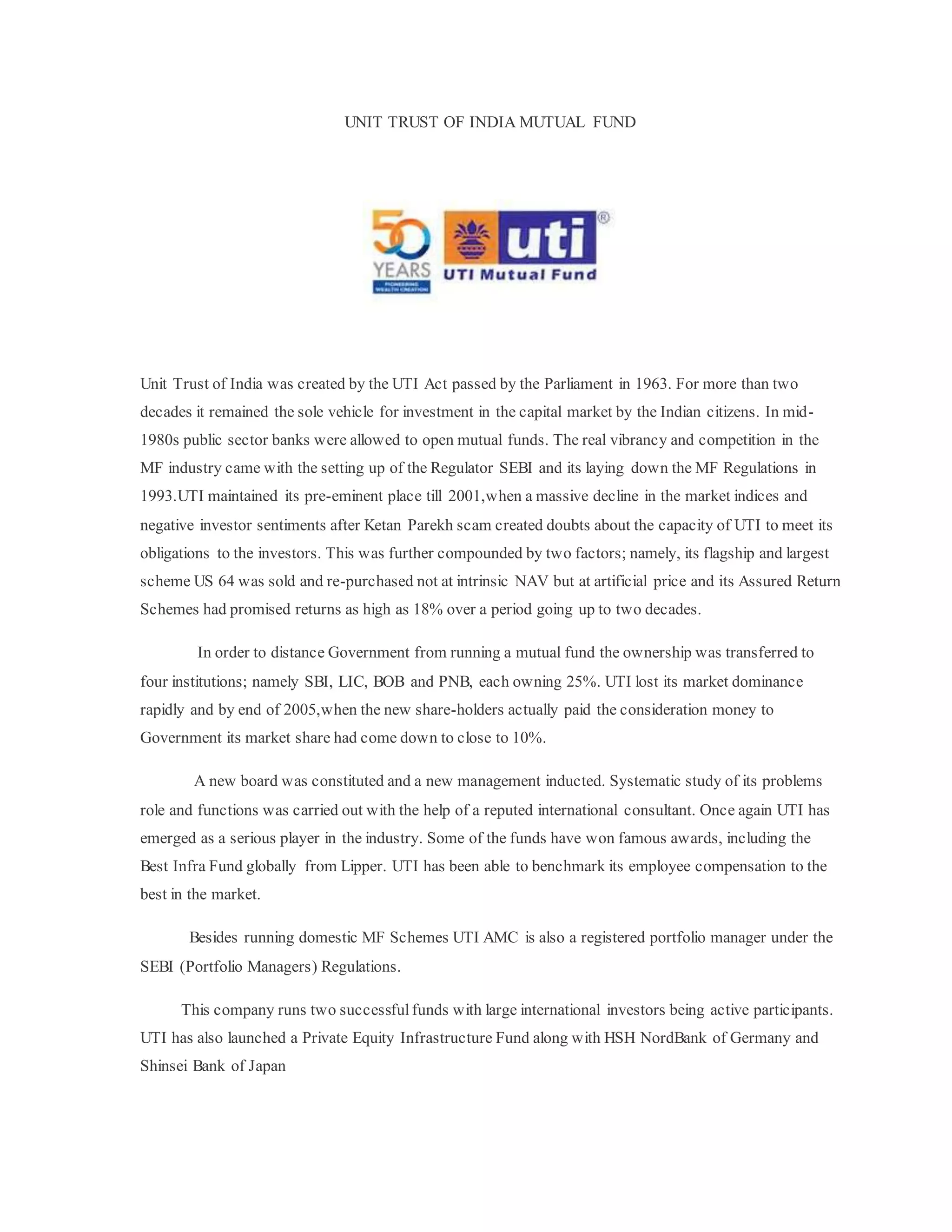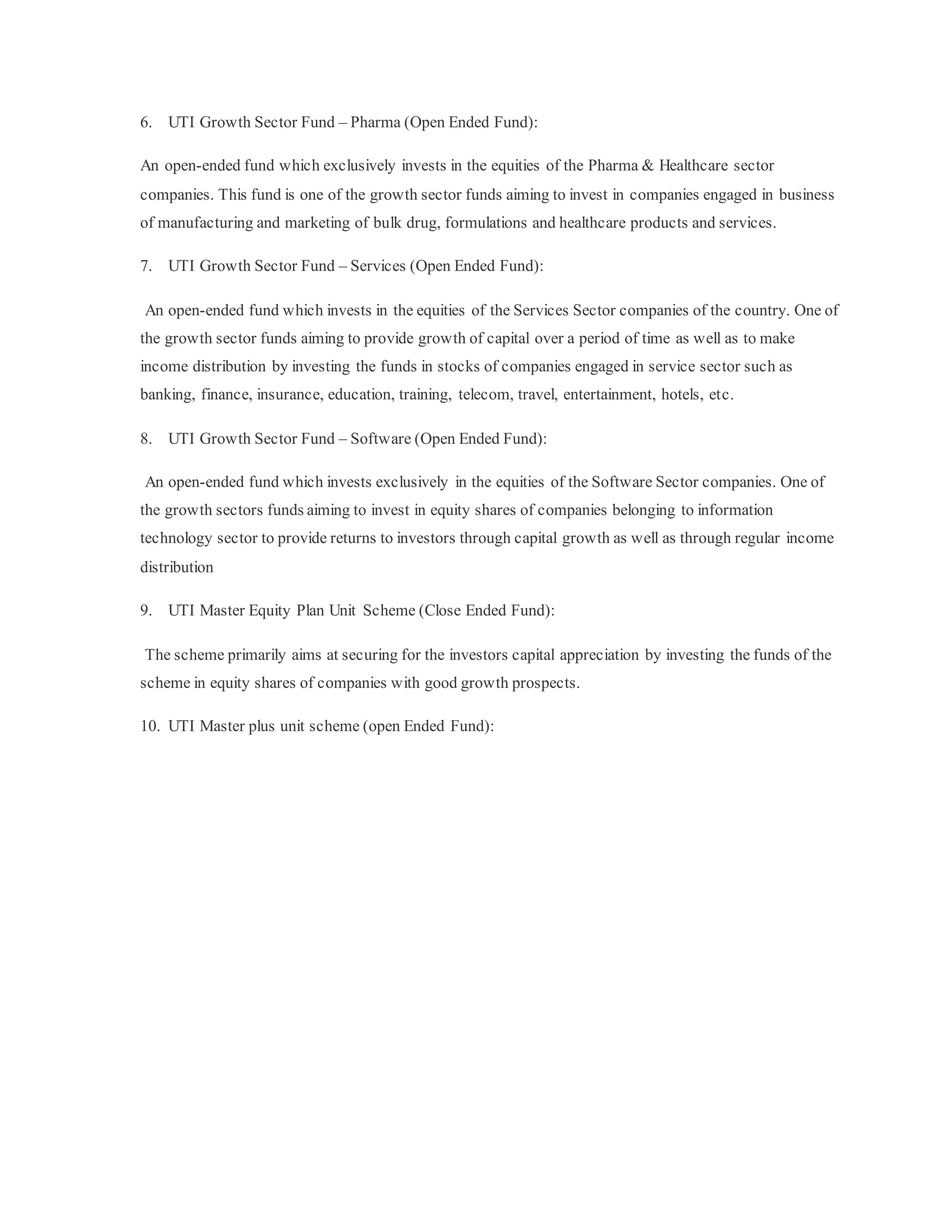The document provides acknowledgements and thanks to various people who helped with the project. It thanks the project guide for their assistance and support. It also thanks library staff members and seniors who helped with collecting and processing data and resources for the project. The project is dedicated to all those who provided assistance.
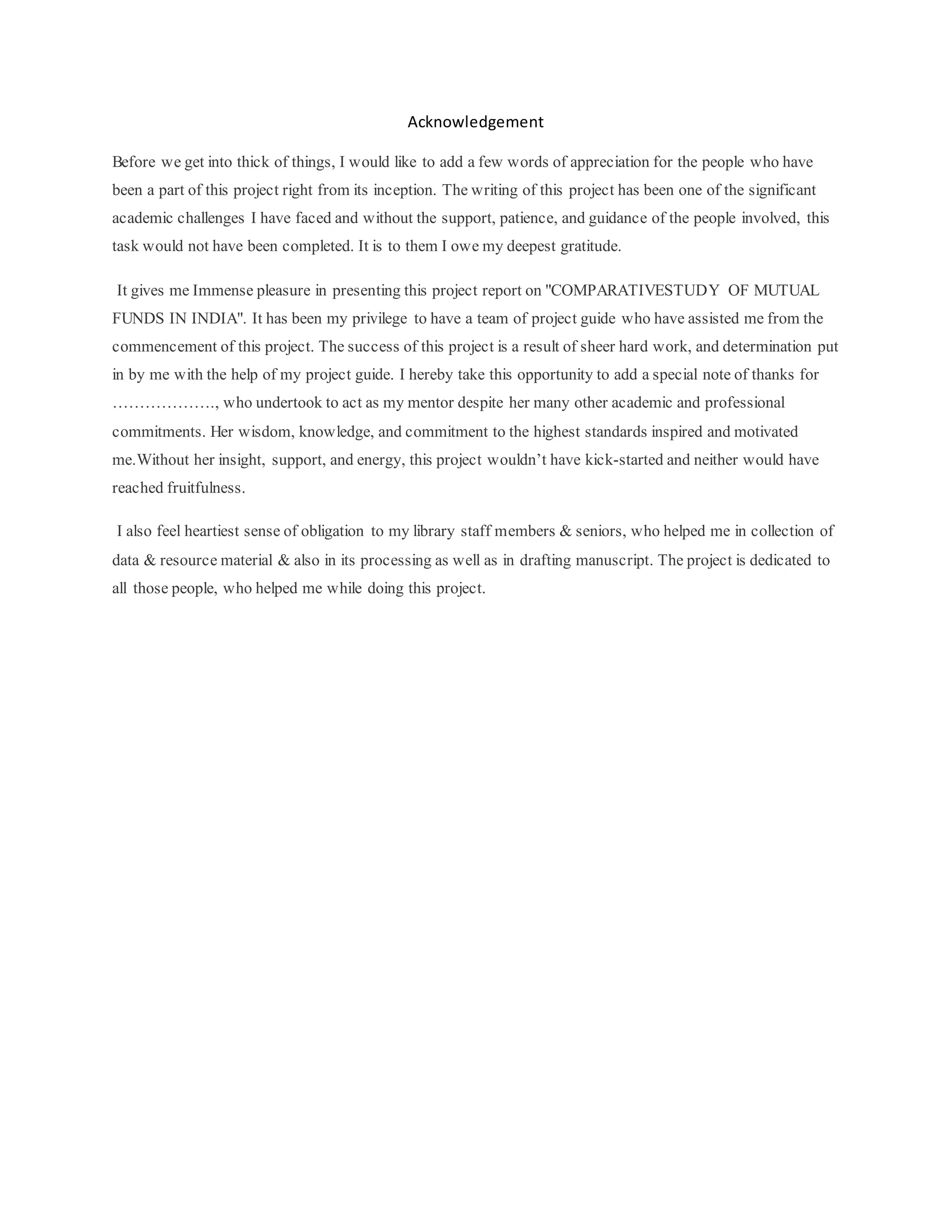

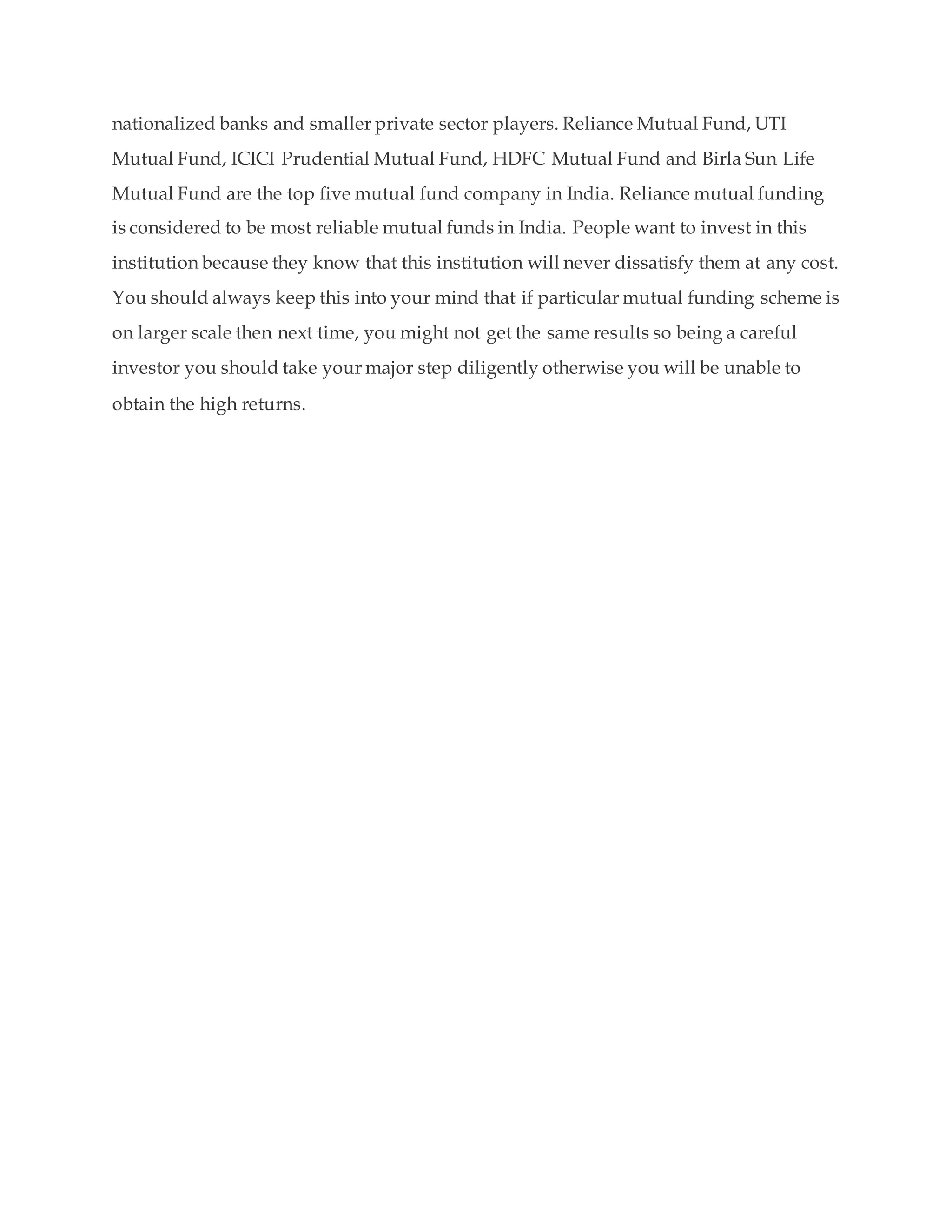
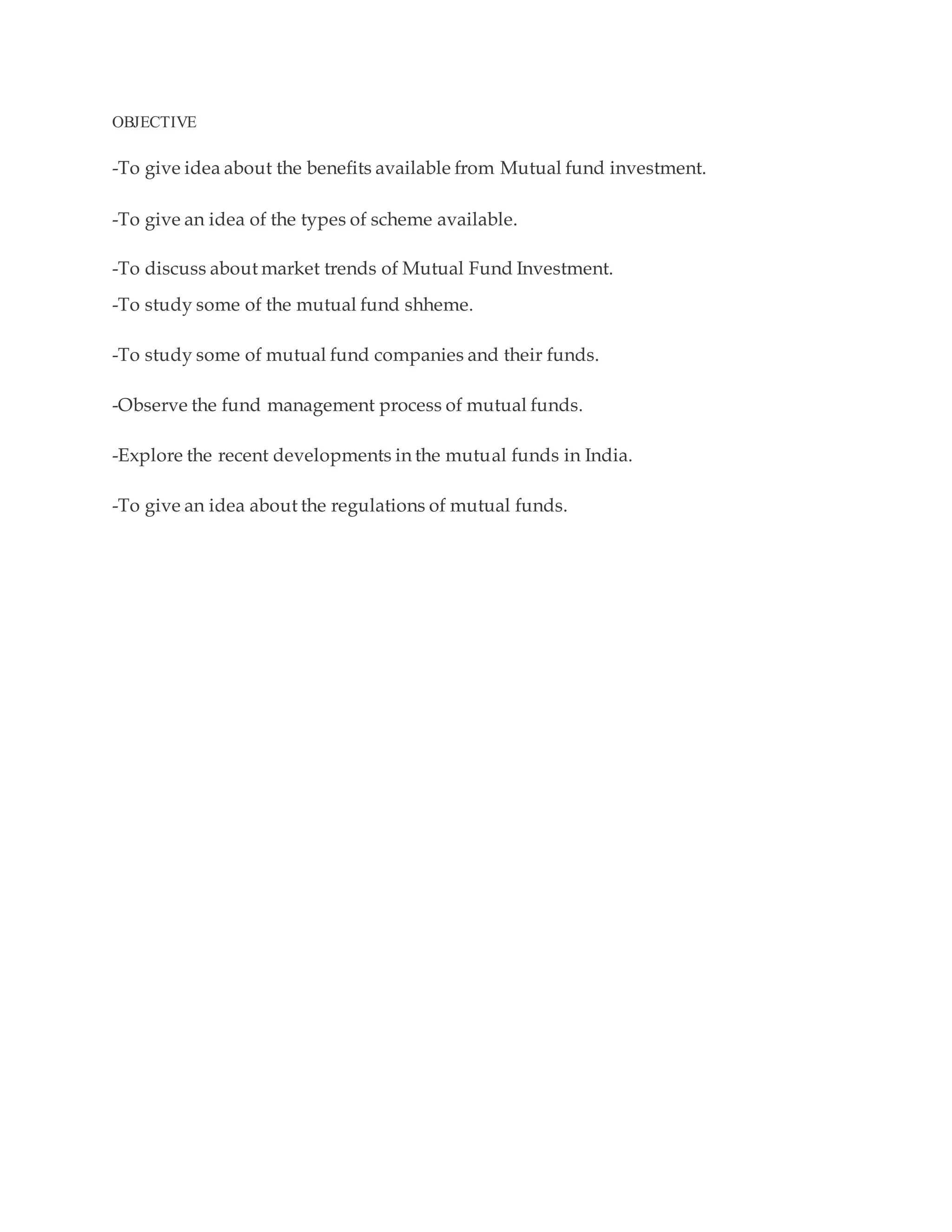

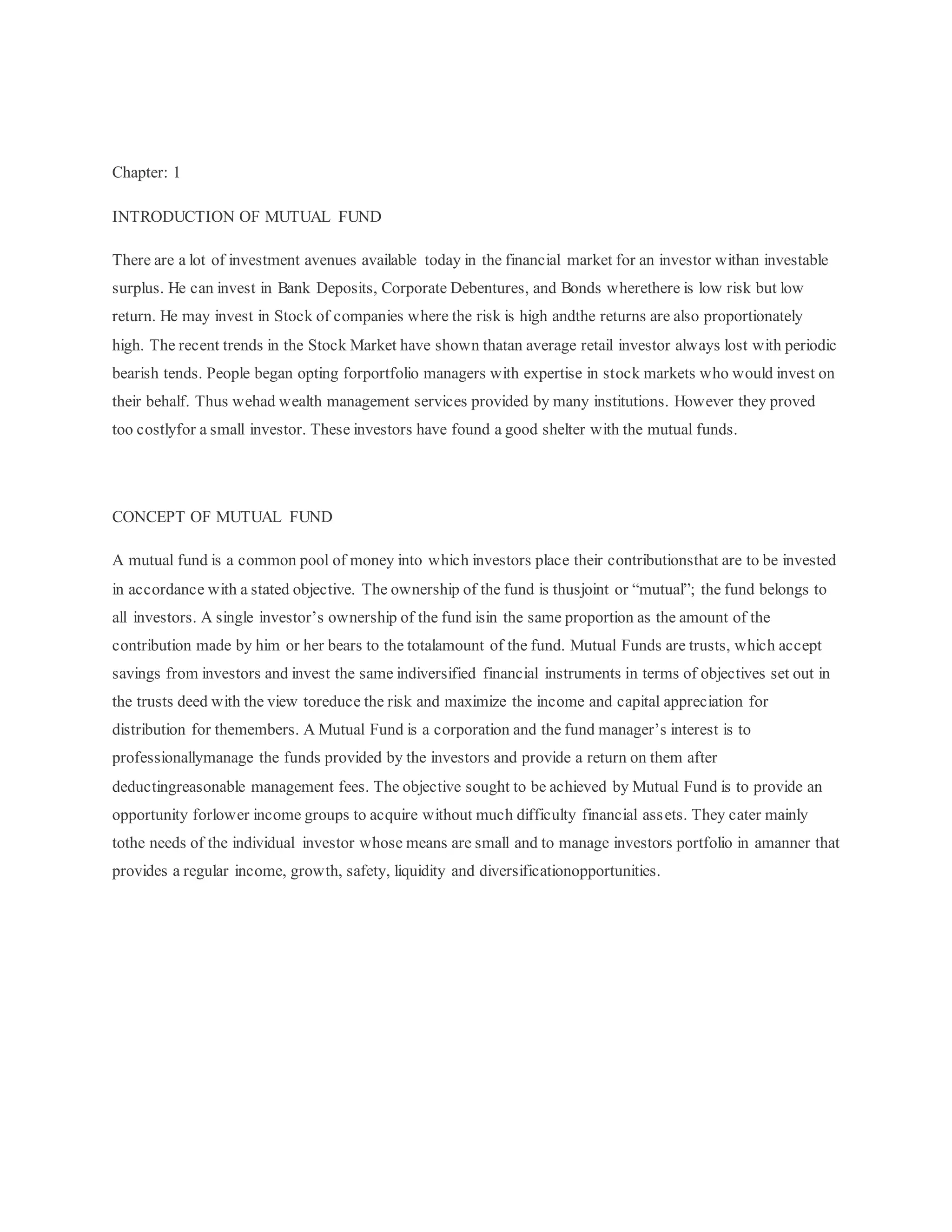
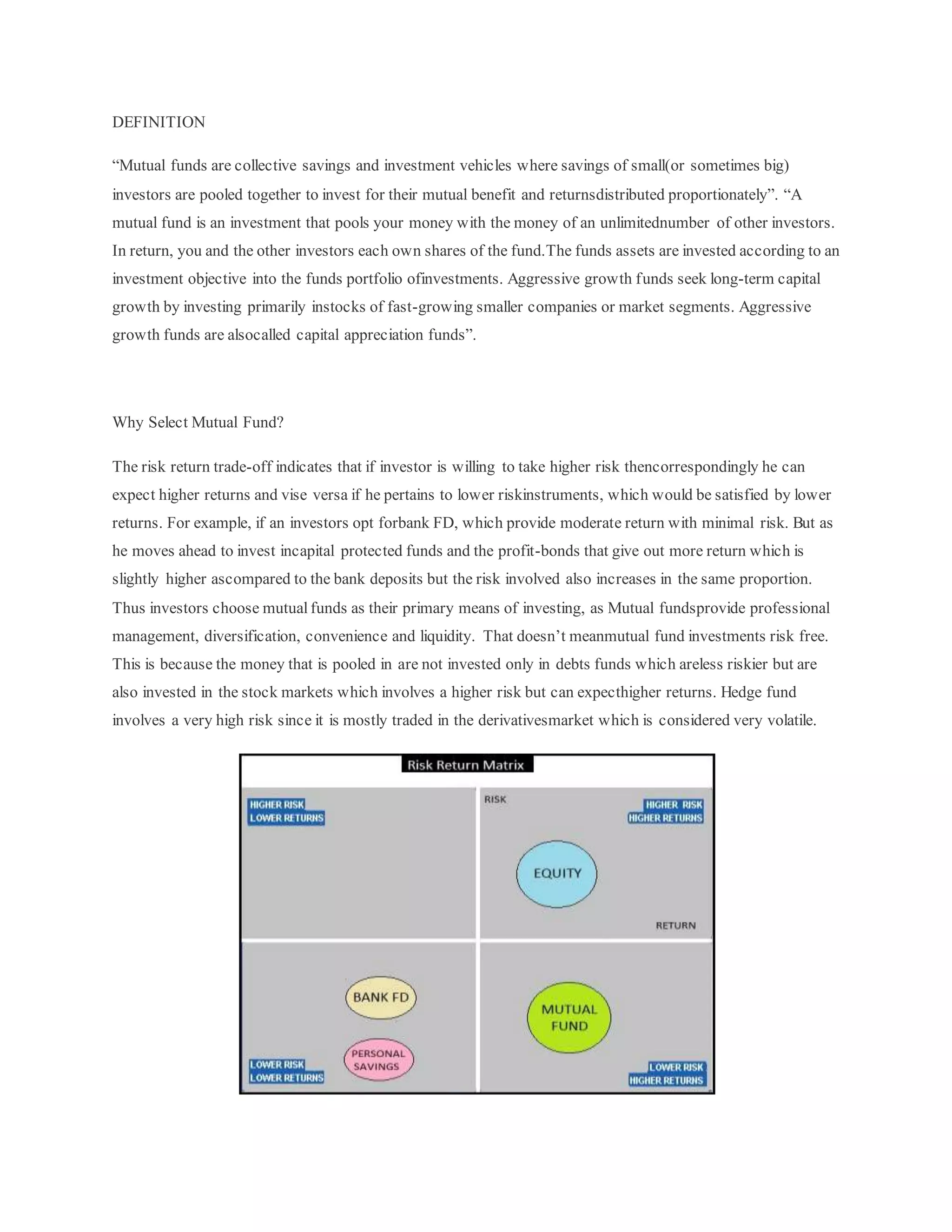


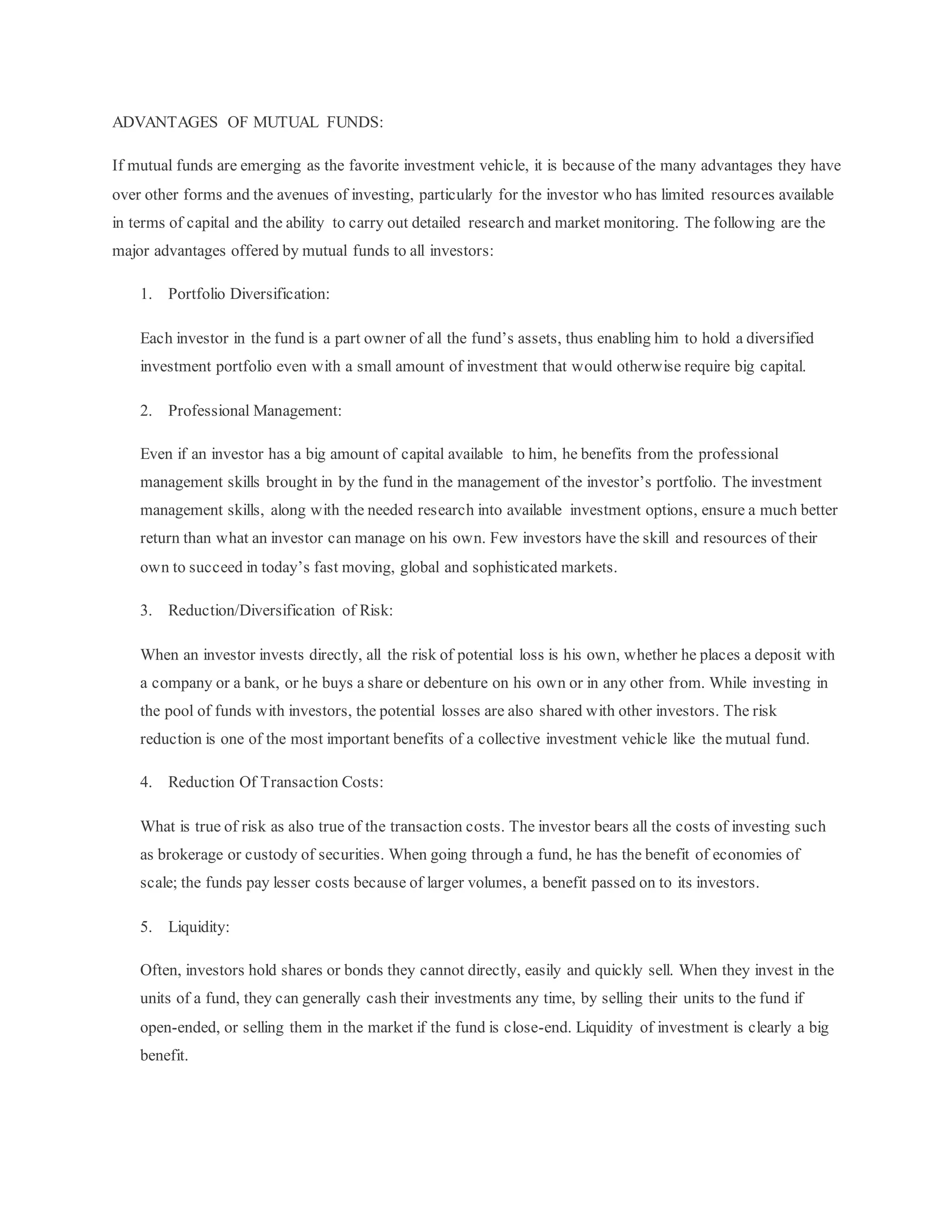
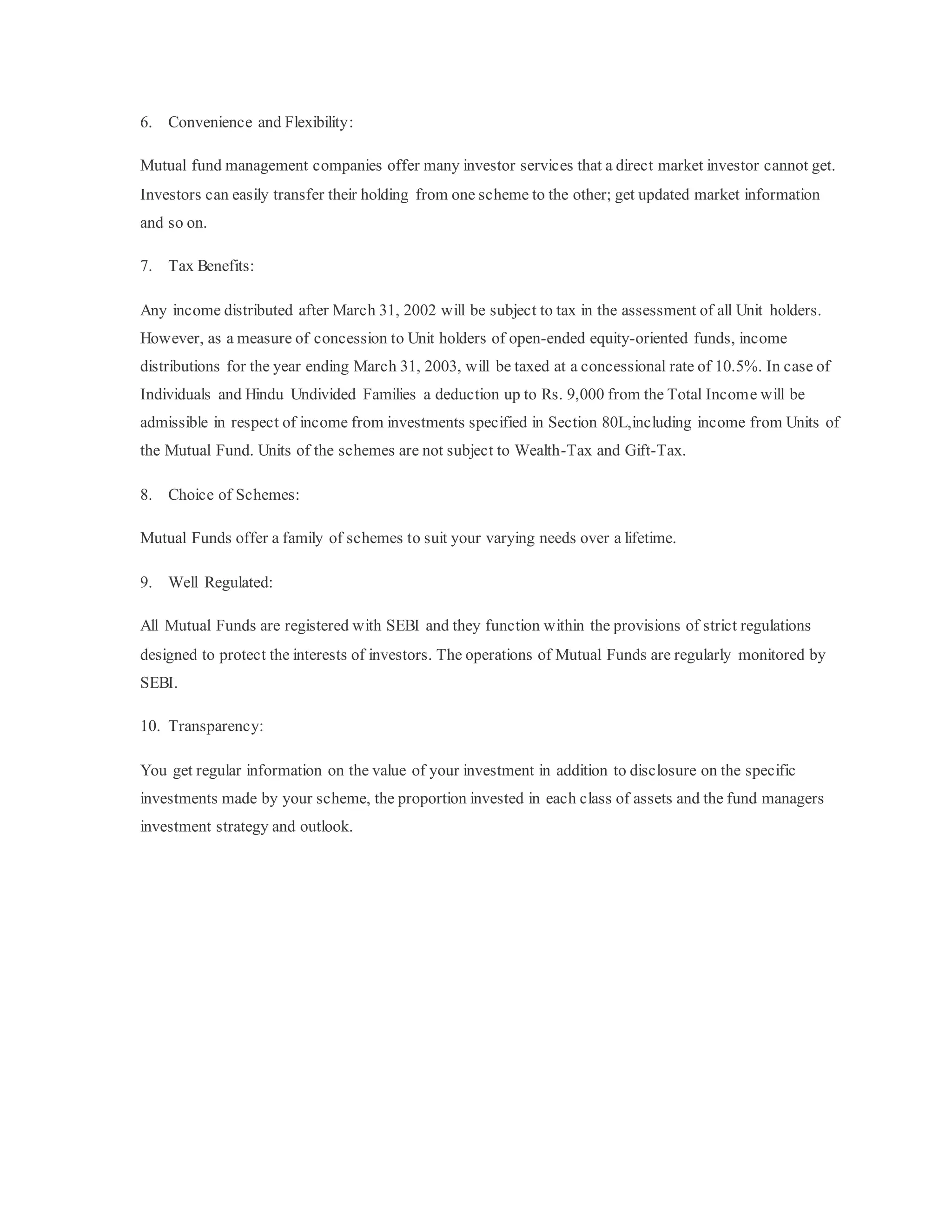
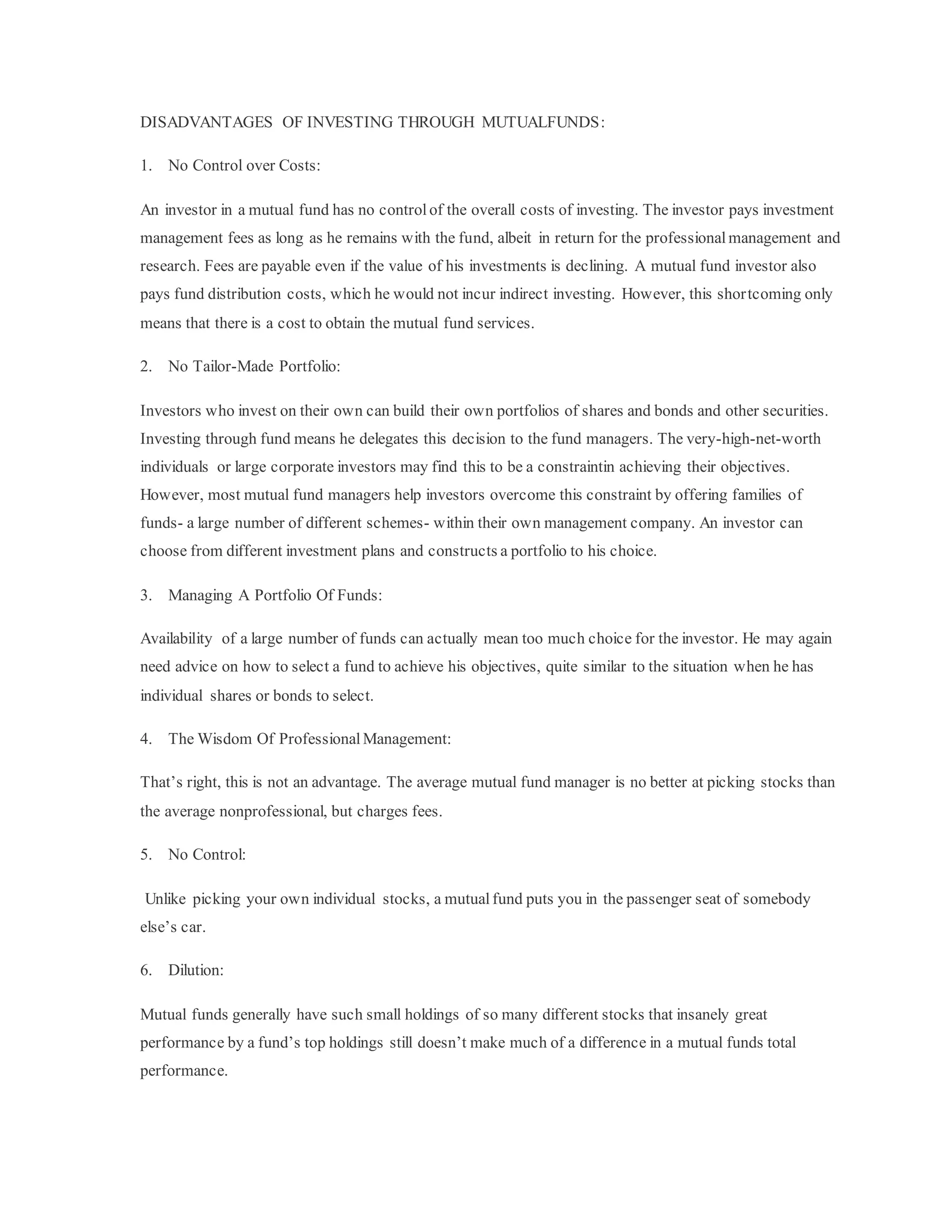

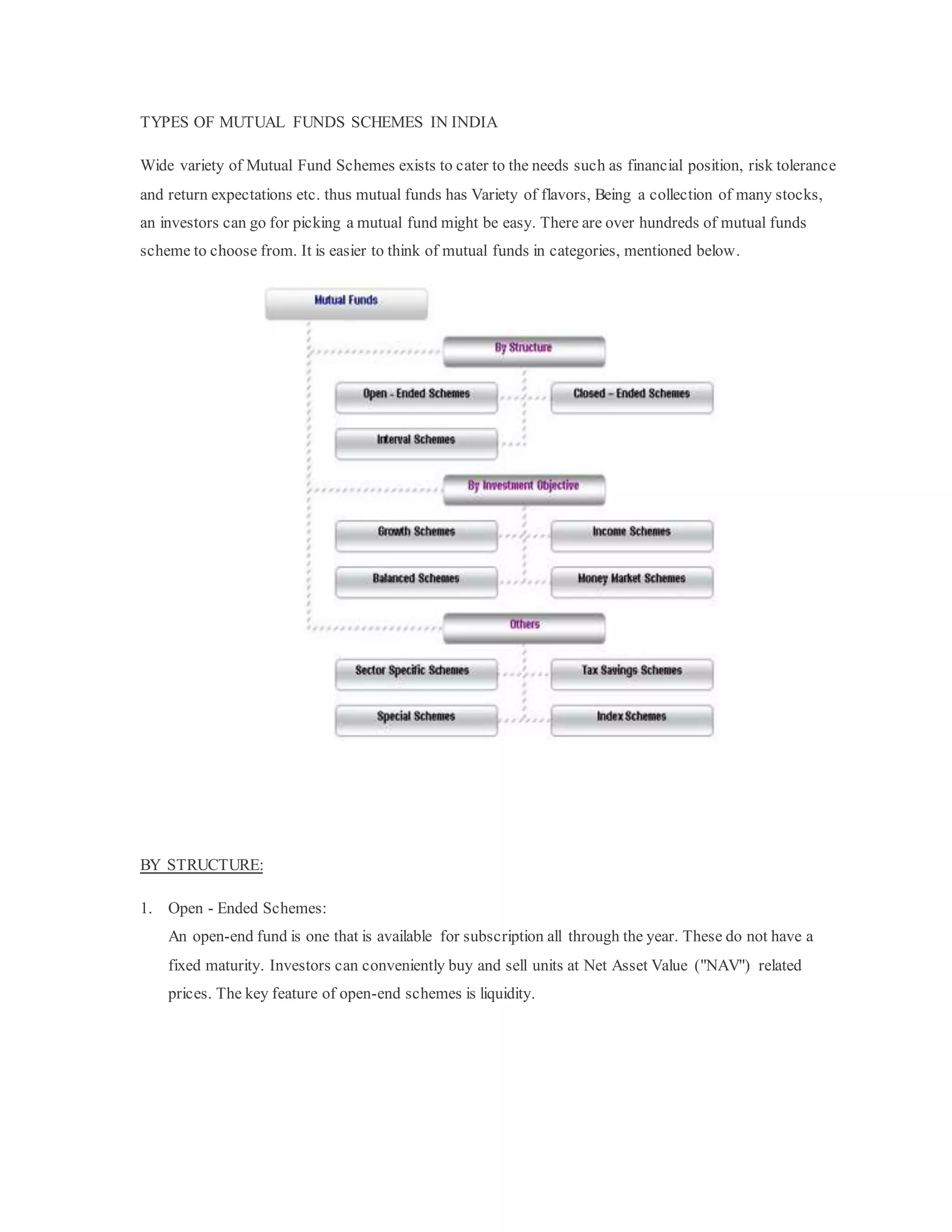
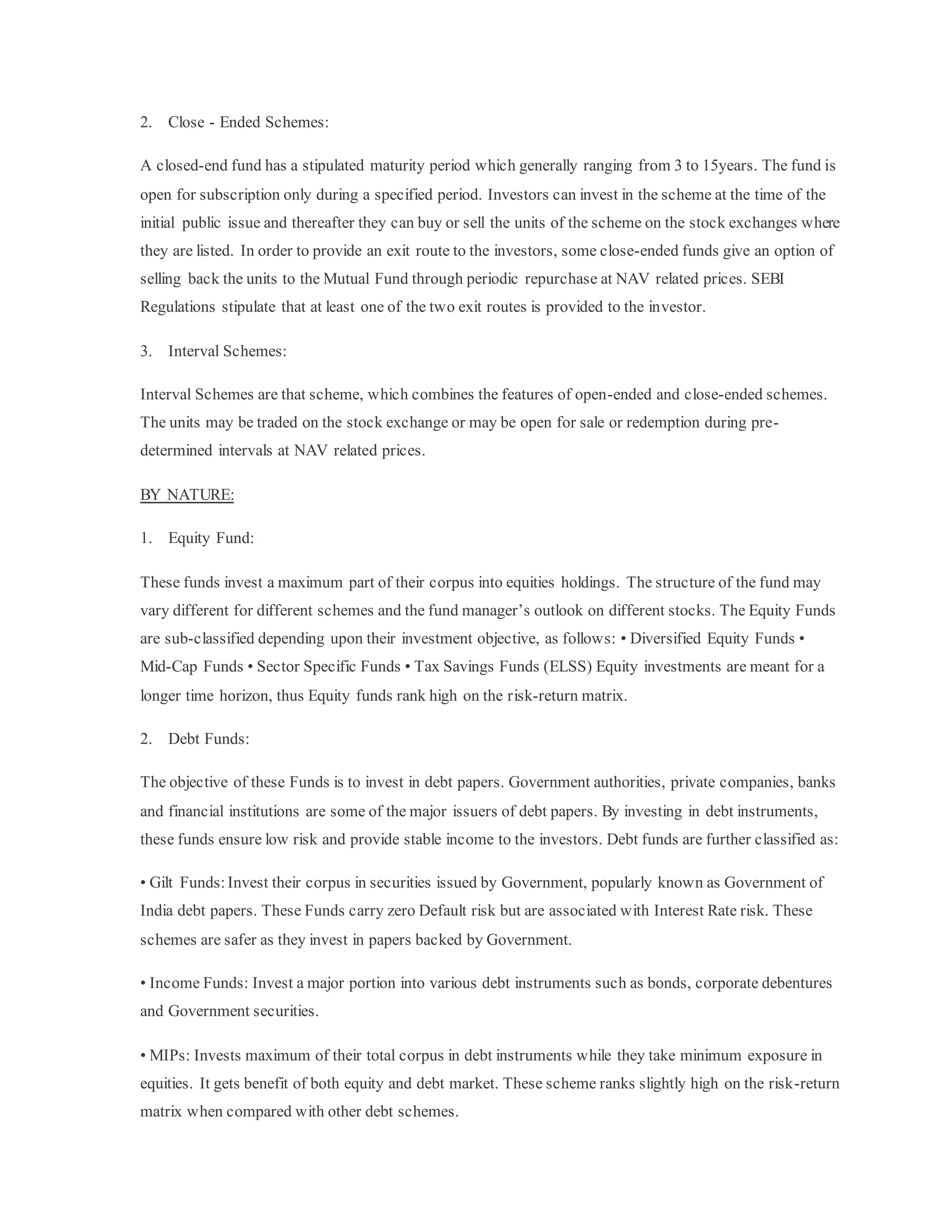
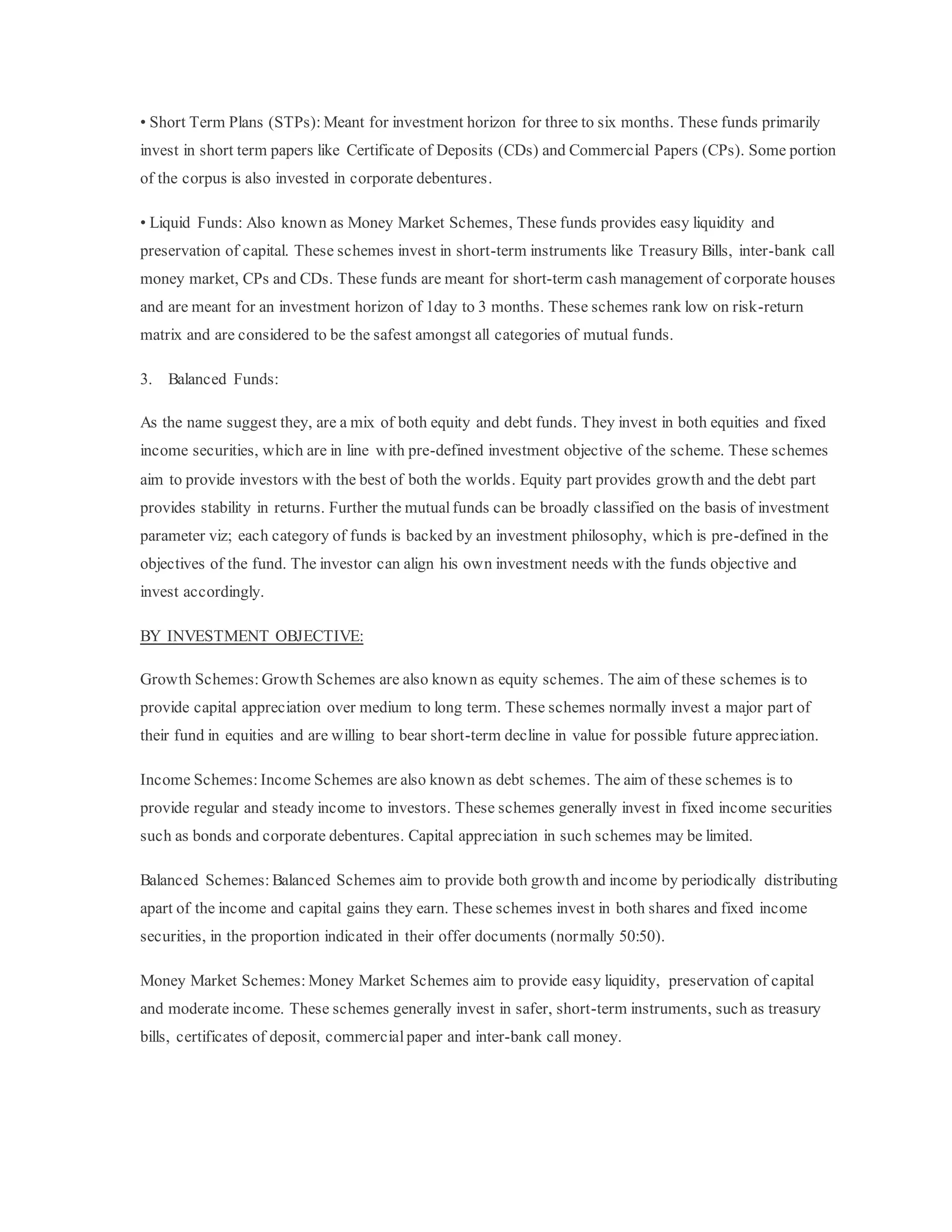
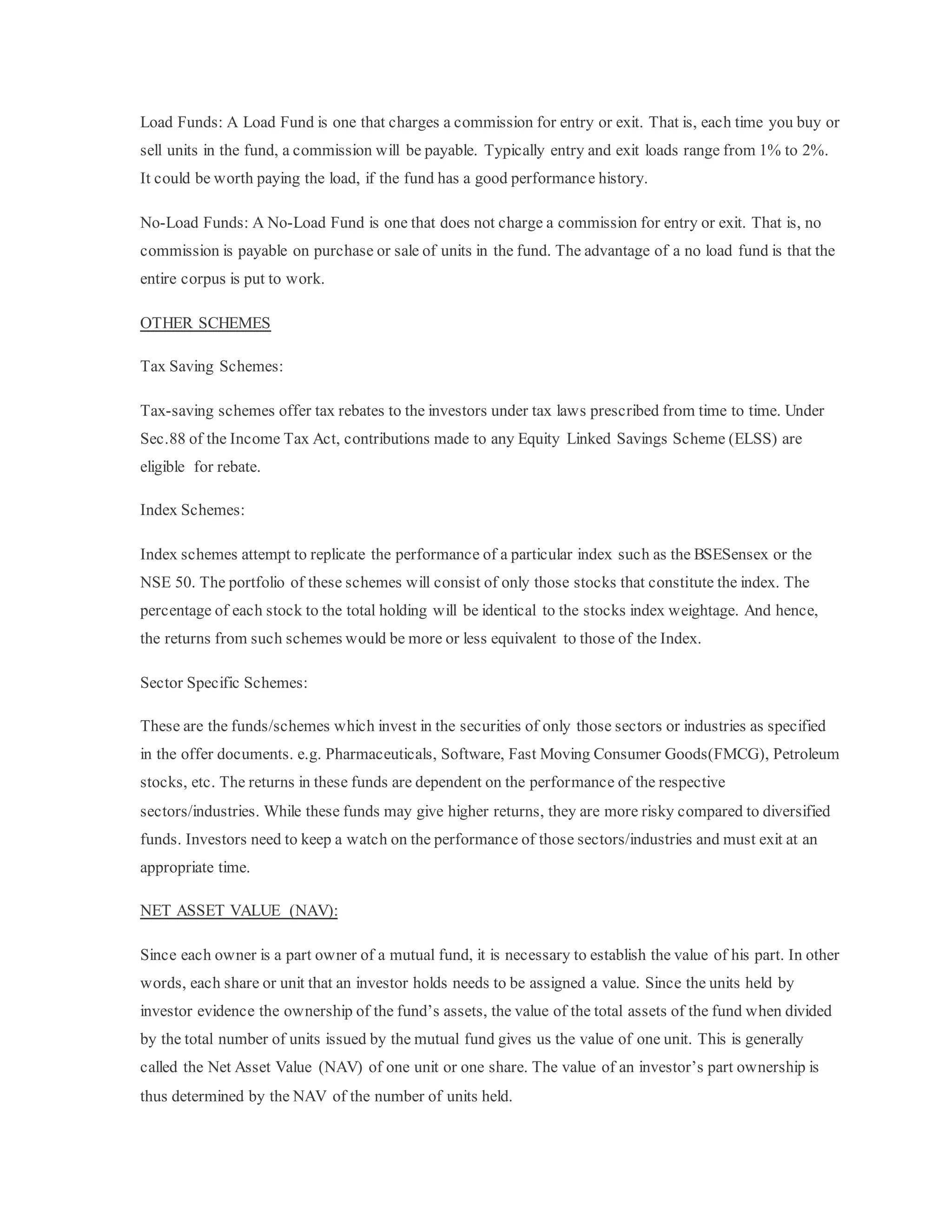
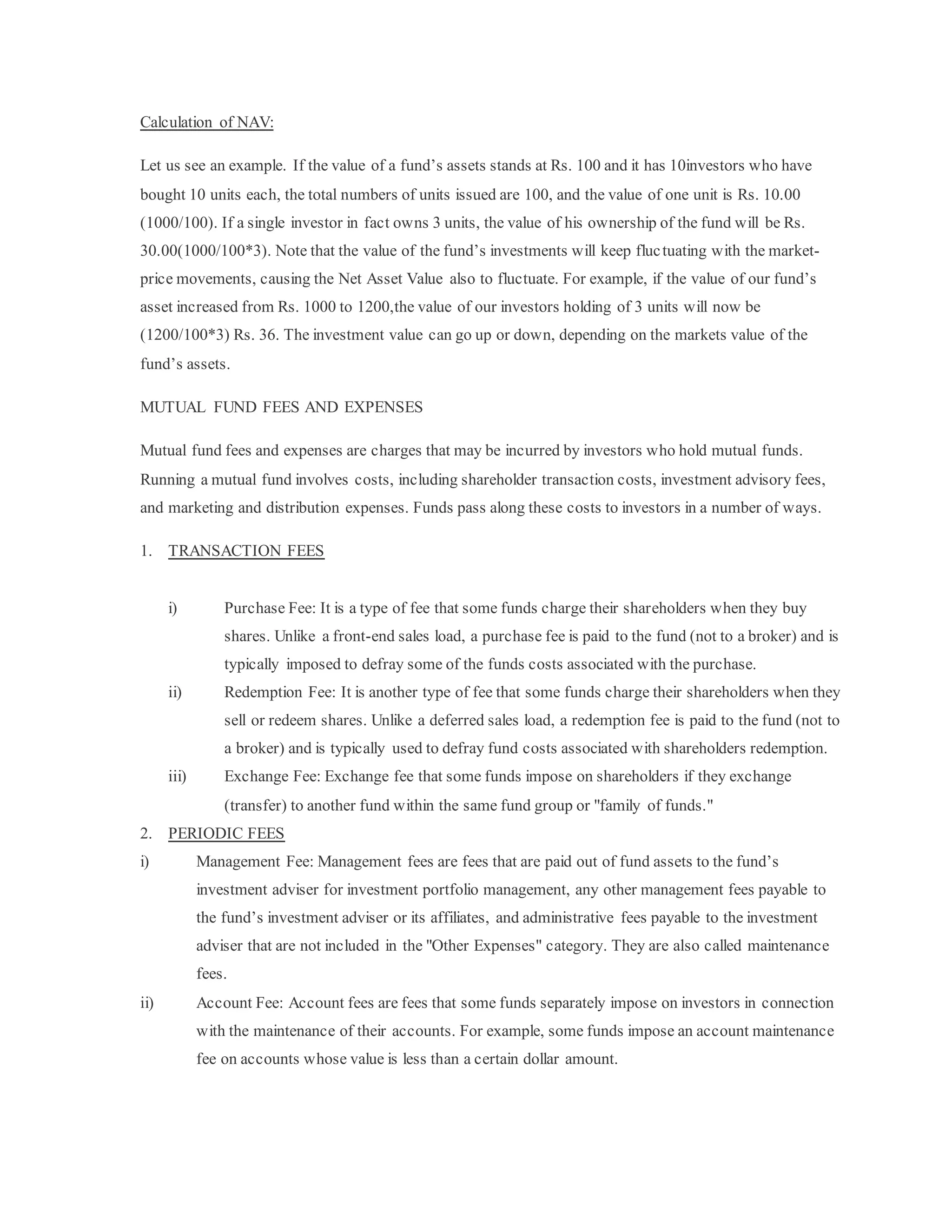
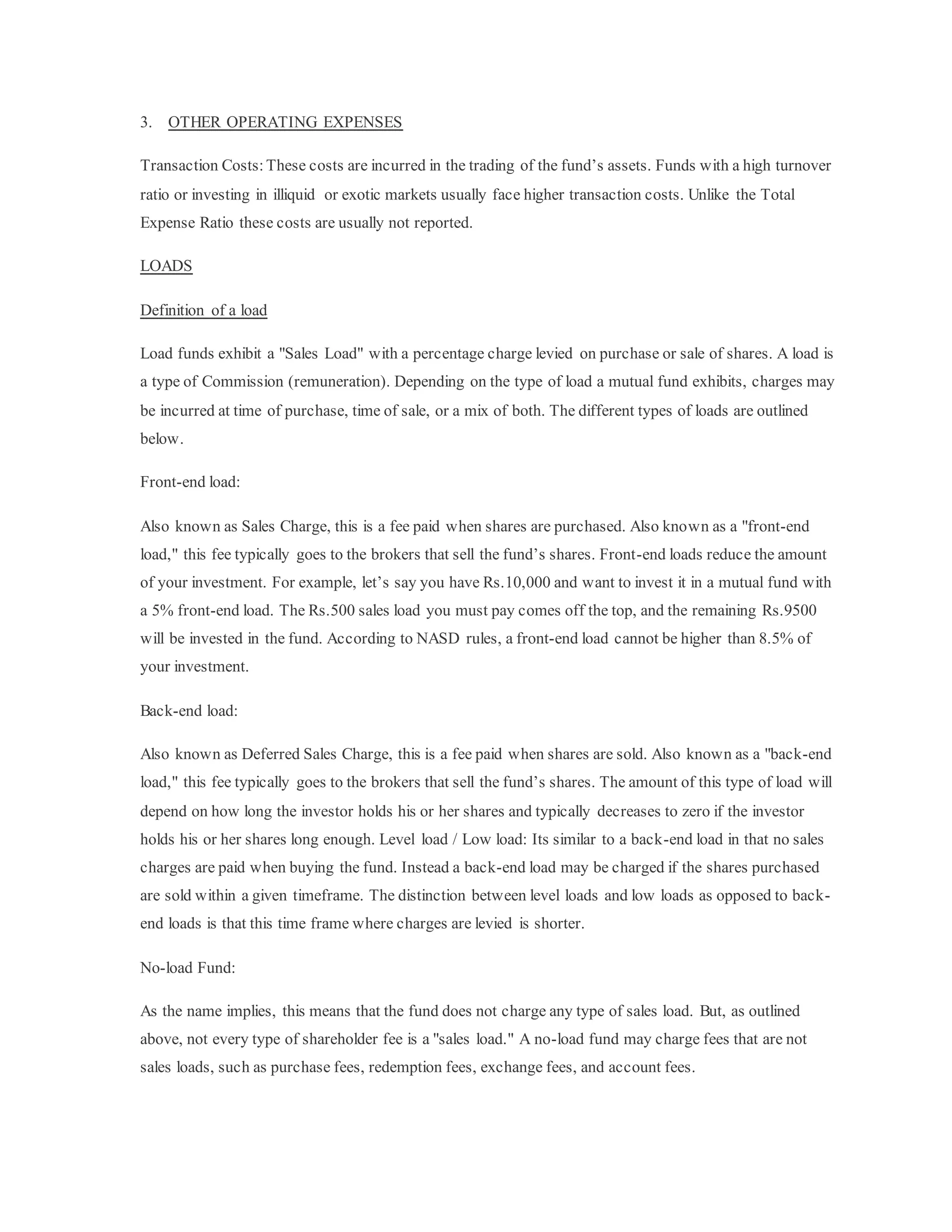
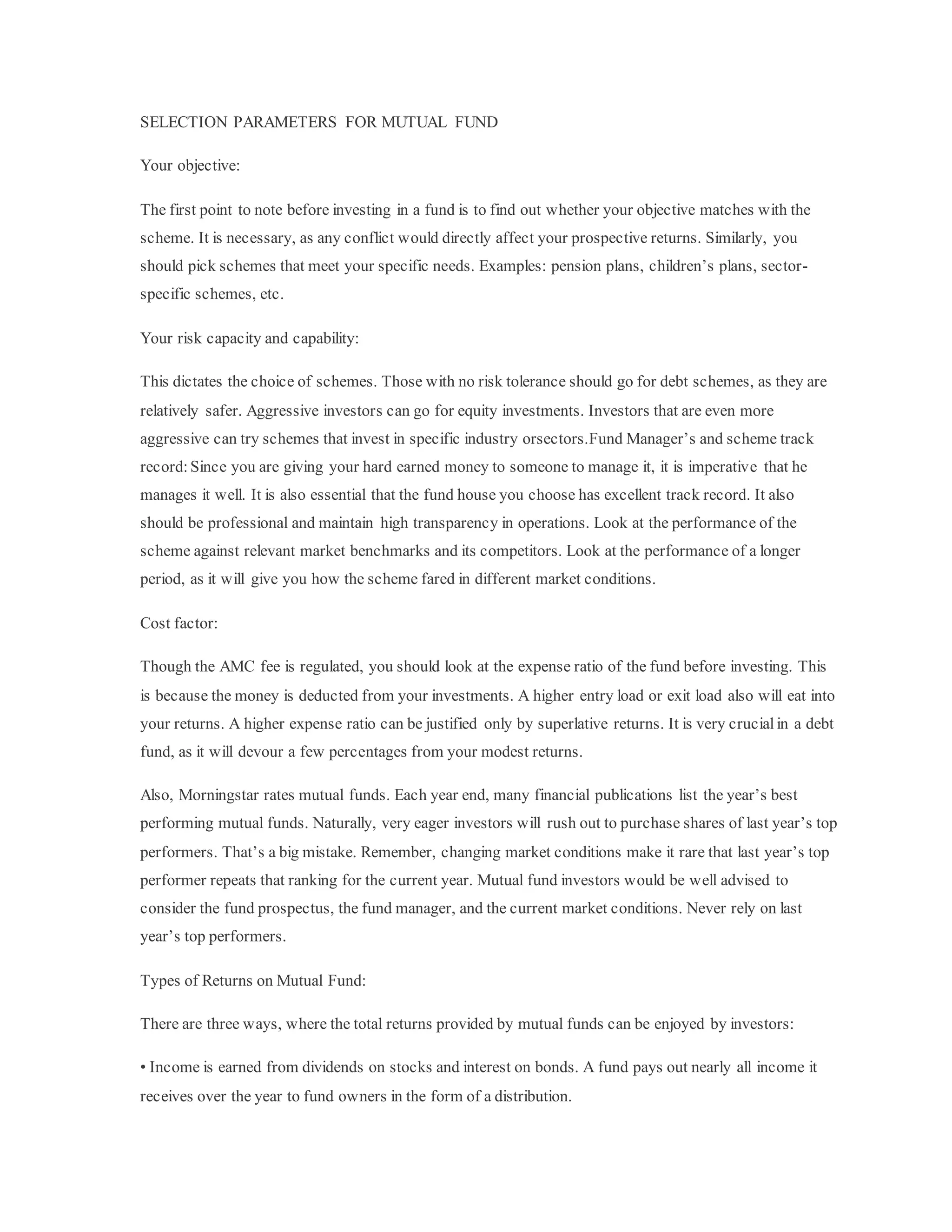
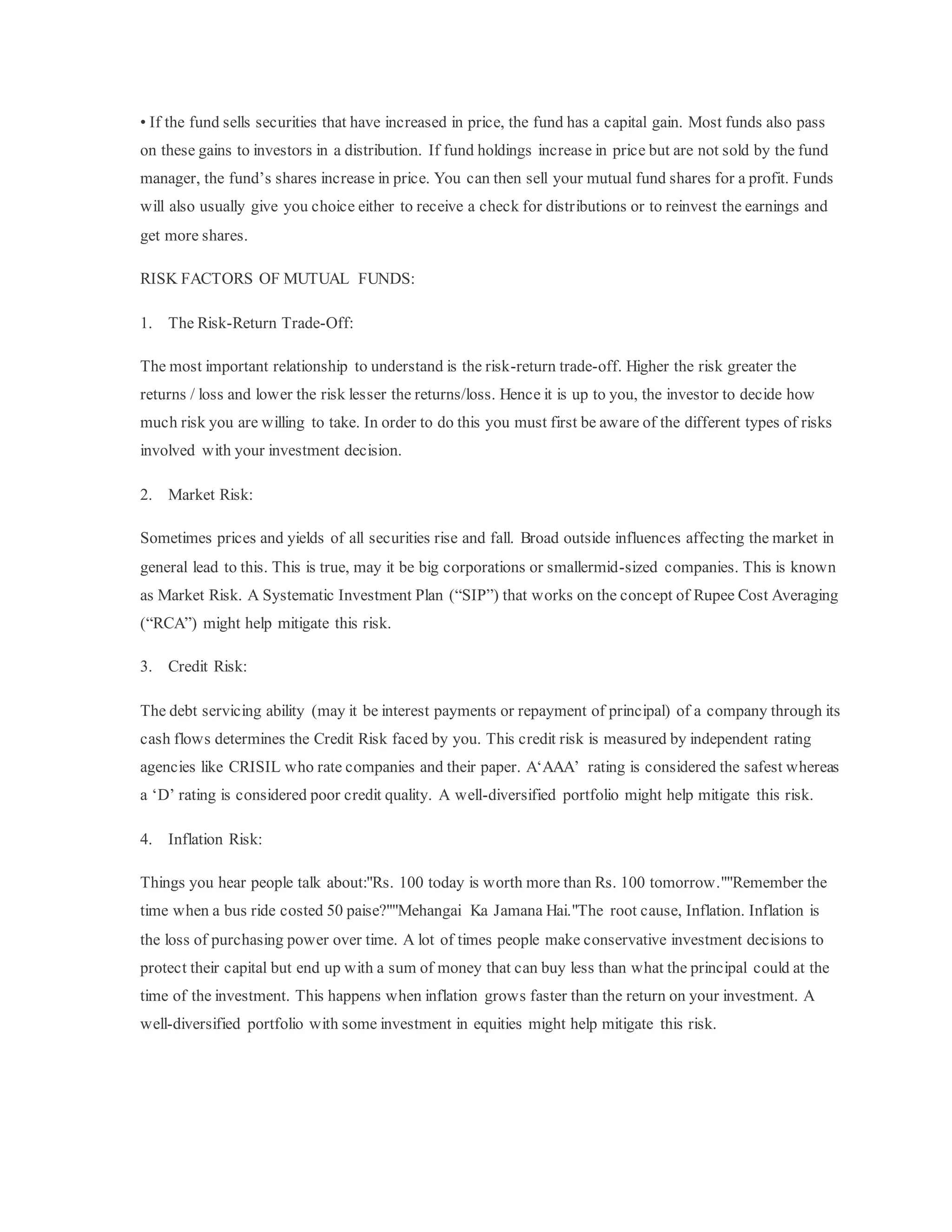
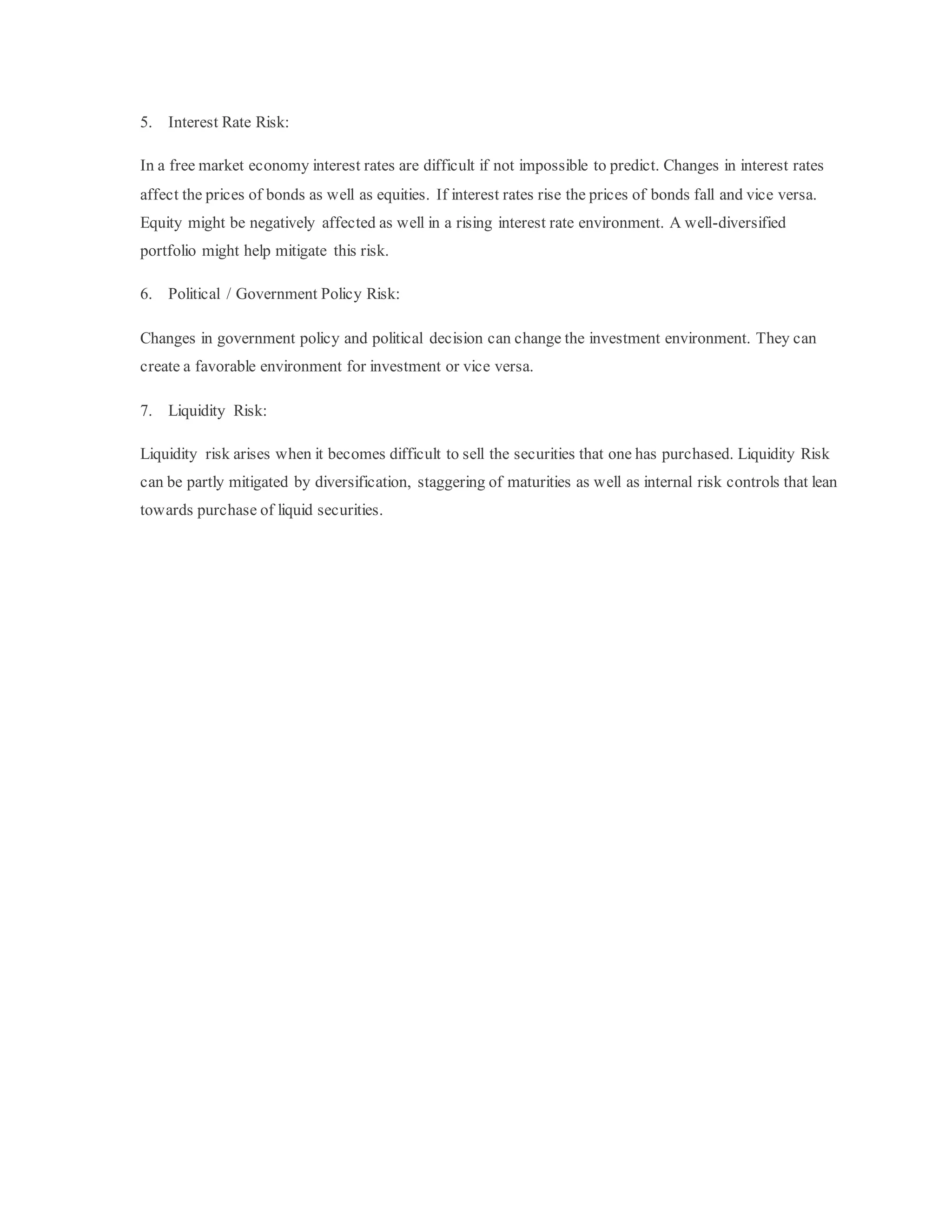
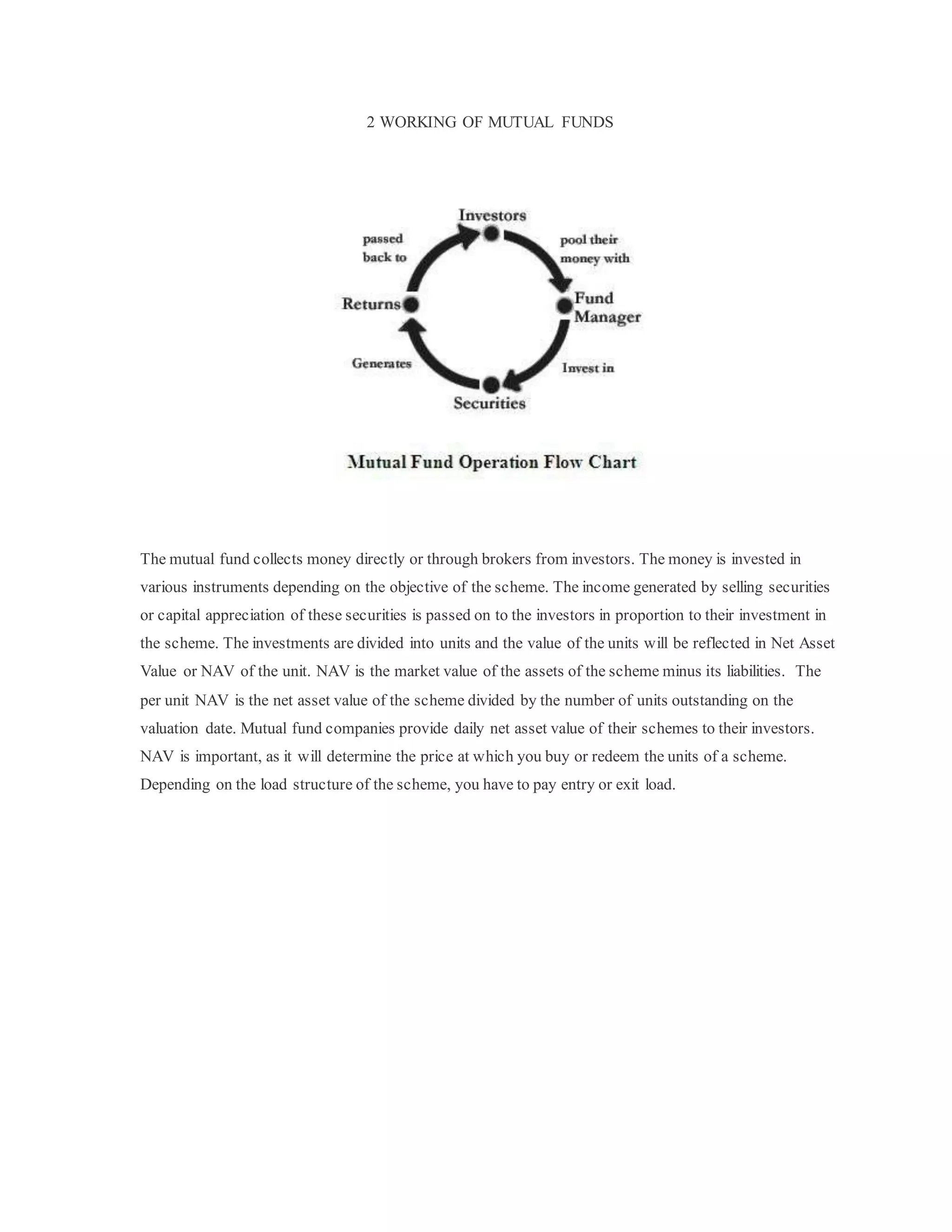

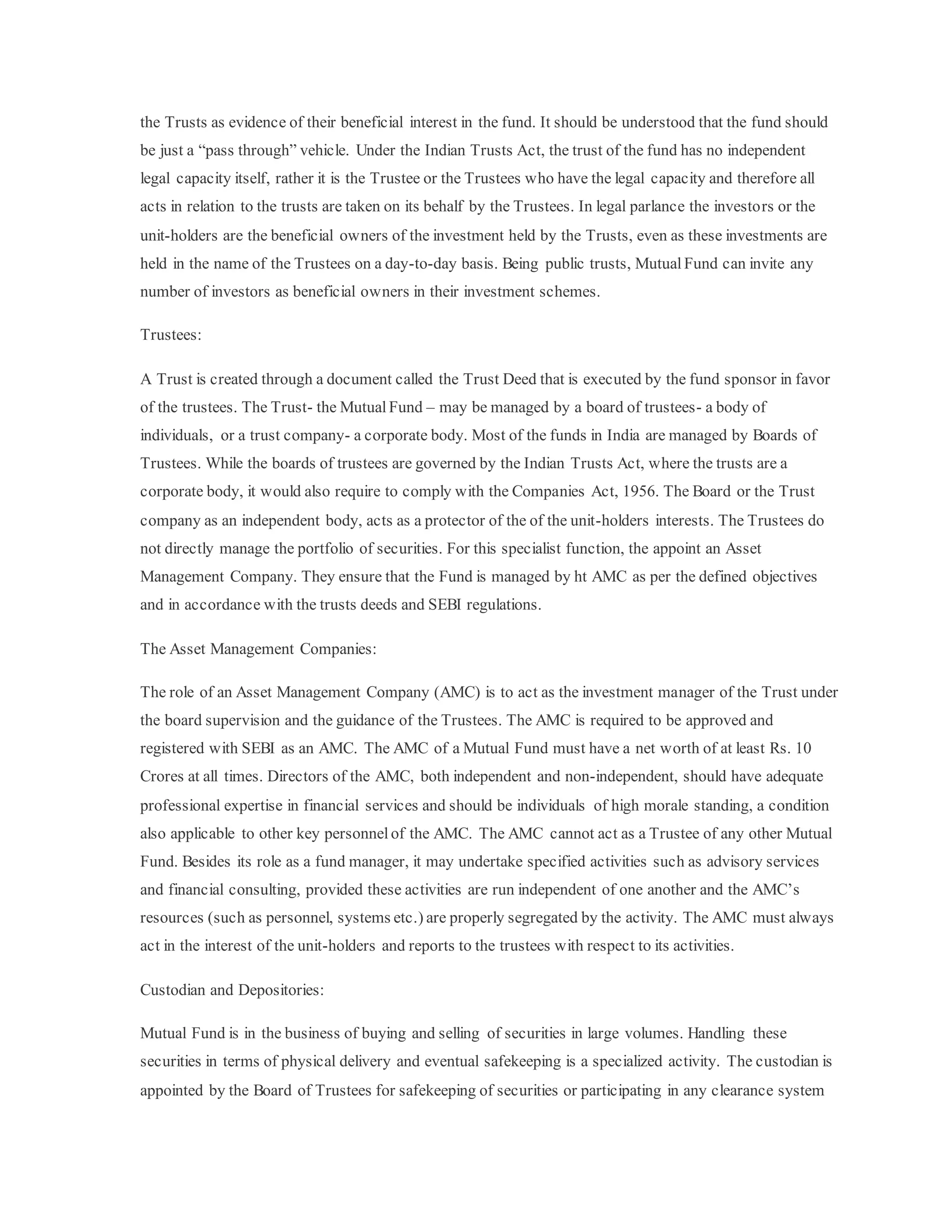
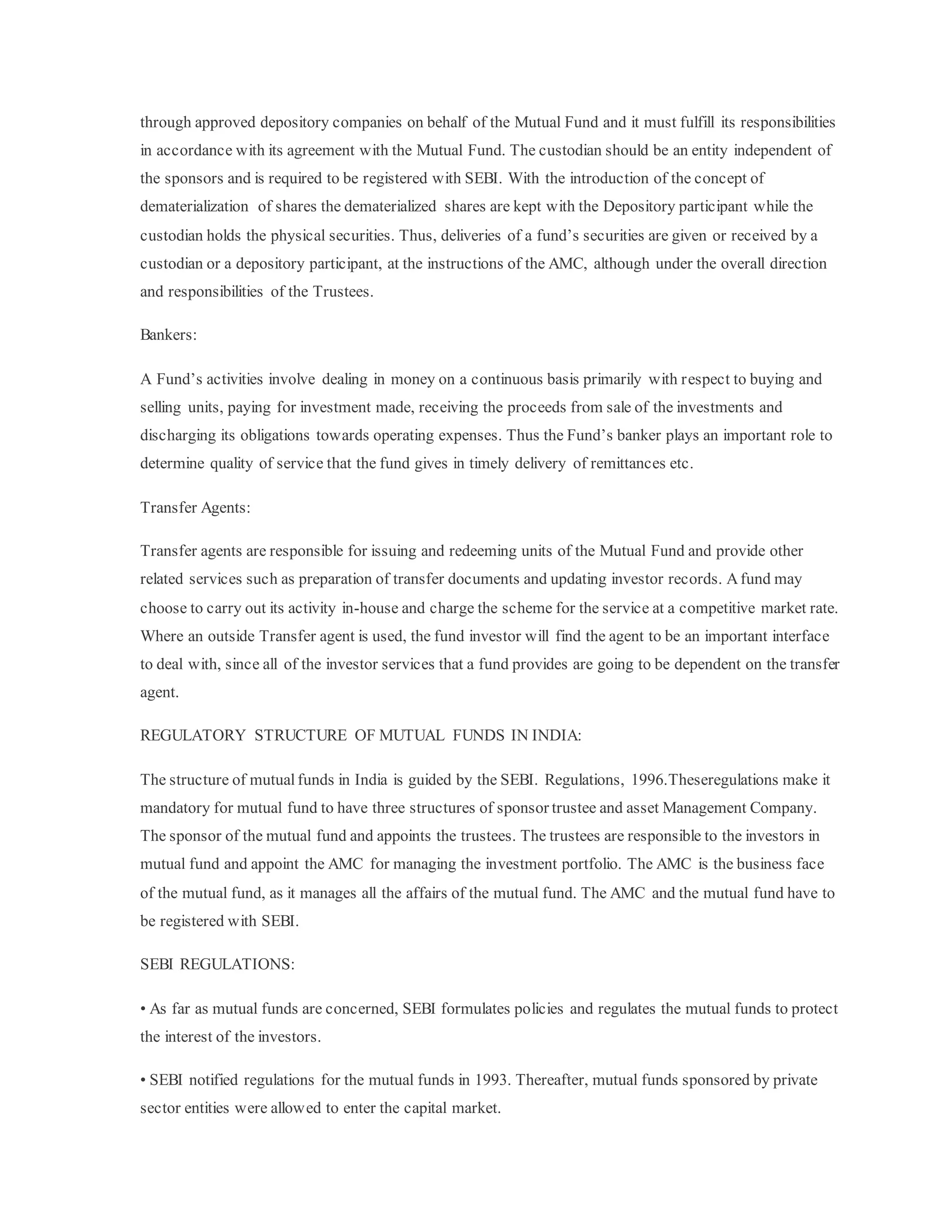
![• The regulations were fully revised in 1996 and have been amended thereafter from time to time.
• SEBI has also issued guidelines to the mutual funds from time to time to protect the interests of
investors.
• All mutual funds whether promoted by public sector or private sector entities including those promoted
by foreign entities are governed by the same set of Regulations. The risks associated with the schemes
launched by the mutual funds sponsored by these entities are of similar type. There is no distinction in
regulatory requirements for these mutual funds and all are subject to monitoring and inspections by SEBI.
• SEBI Regulations require that at least two thirds of the directors of trustee company or board of trustees
must be independent i.e. they should not be associated with the sponsors.•Also, 50% of the directors of
AMC must be independent. All mutual funds are required to be registered with SEBI before they launch
any scheme.
• Further SEBI Regulations, inter-alia, stipulate that MFs cannot guarantee returns in any scheme and that
each scheme is subject to 20 : 25 condition [I.e. minimum 20 investors per scheme and one investor can
hold more than 25% stake in the corpus in that one scheme].
• Also SEBI has permitted MFs to launch schemes overseas subject various restrictions and also to launch
schemes linked to Real Estate, Options and Futures, Commodities, etc.
ASSOCIATION OF MUTUAL FUNDS IN INDIA (AMFI):
With the increase in mutual fund players in India, a need for mutual fund association in India was
generated to function as a non-profit organization. Association of Mutual Funds in India (AMFI) was
incorporated on 22nd August, 1995. AMFI is an apex body of all Asset Management Companies (AMC)
which has been registered with SEBI. Till date all the AMCs are that have launched mutual fund schemes
are its members. It functions under the supervision and guidelines of its Board of Directors. Association of
Mutual Funds India has brought down the Indian Mutual Fund Industry to a professional and healthy
market with ethical lines enhancing and maintaining standards. It follows the principle of both protecting
and promoting the interests of mutual funds as well as their unit holders.
The Objectives of Association of Mutual Funds in India:
The Association of Mutual Funds of India works with 30 registered AMCs of the country. It has certain
defined objectives which juxtaposes the guidelines of its Board of Directors. The objectives are as follows:
• This mutual fund association of India maintains high professional and ethical standards in all areas of
operation of the industry.](https://image.slidesharecdn.com/i74tirqnoxgfgenc3kaa-signature-232bd18efd99687cb16b033ce953b140f4fa51d82151935e434dbe26e0e6ed26-poli-151016165252-lva1-app6892/75/Study-on-Mutual-fund-in-India-27-2048.jpg)
